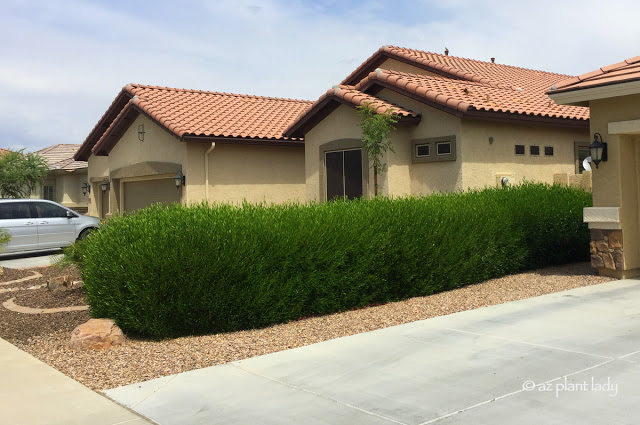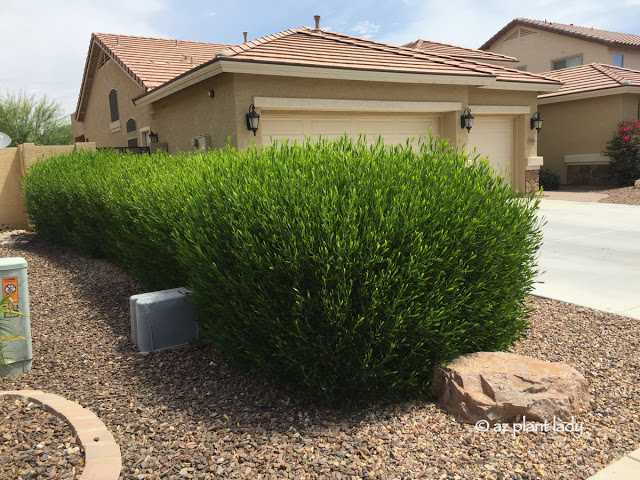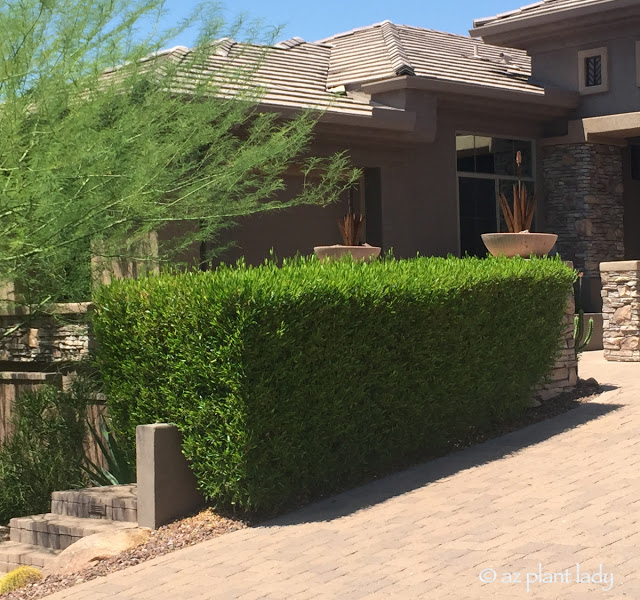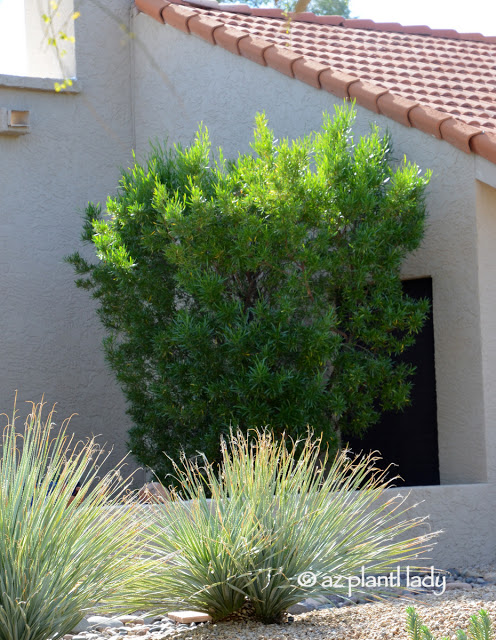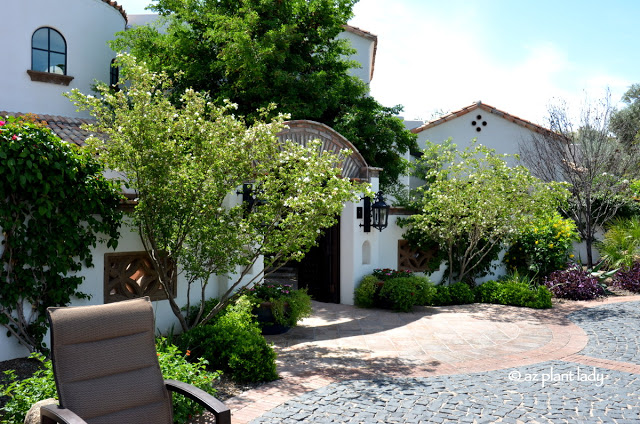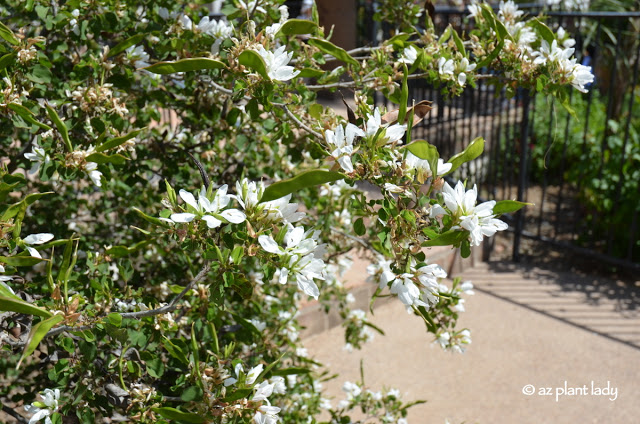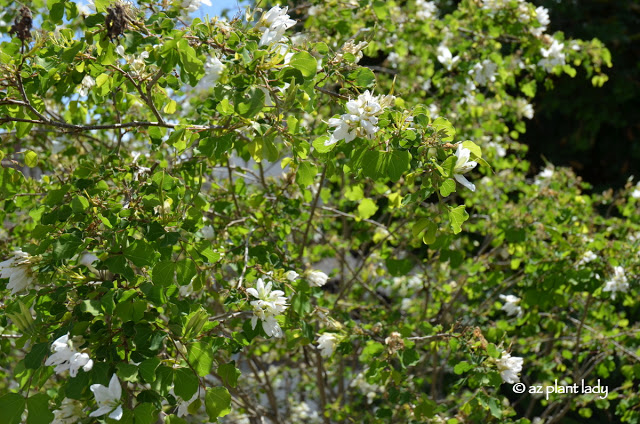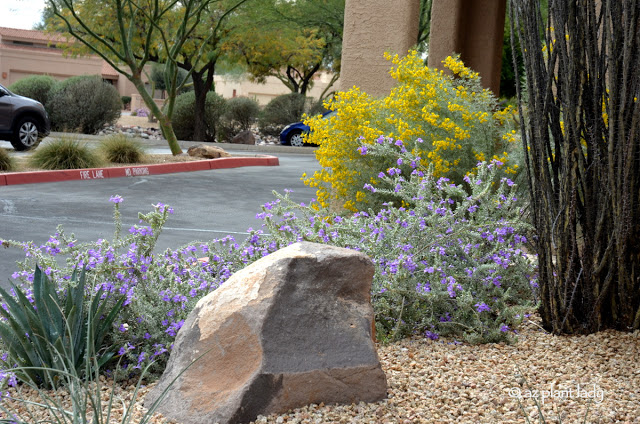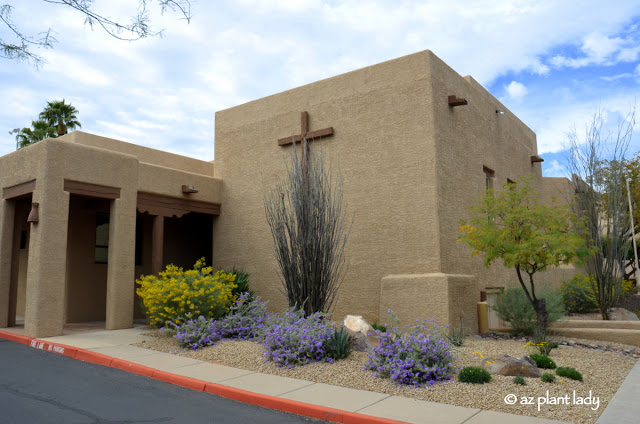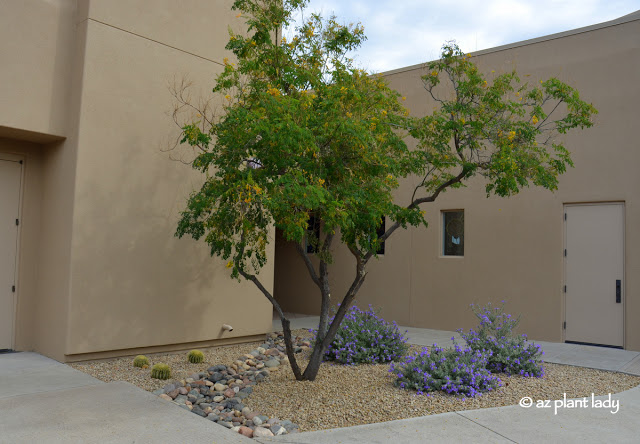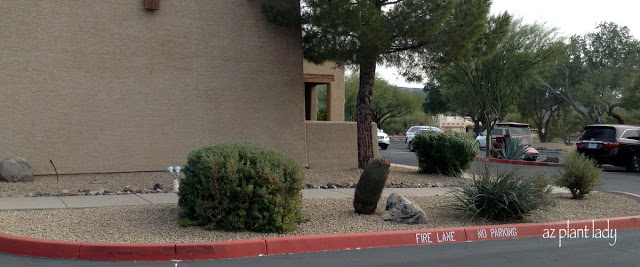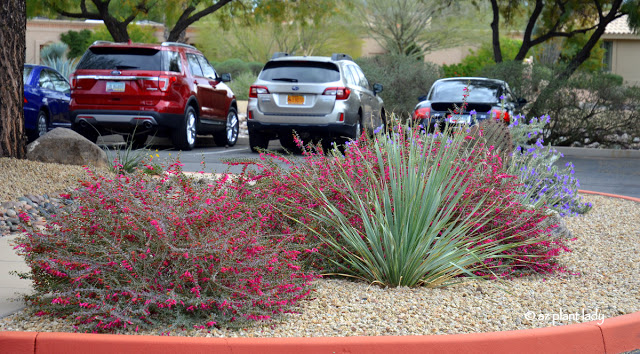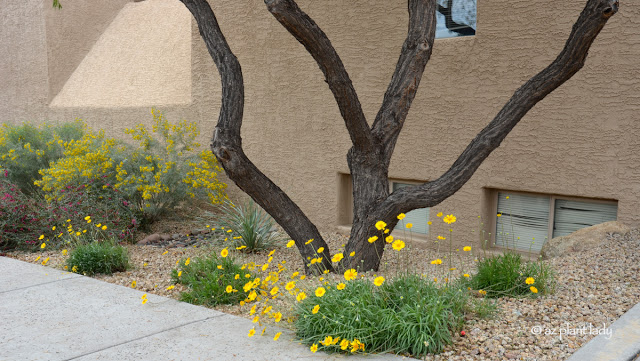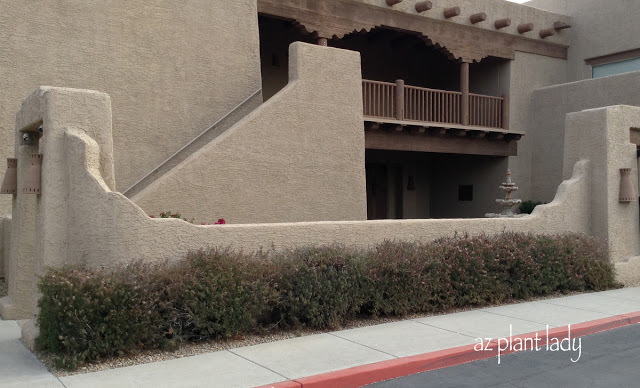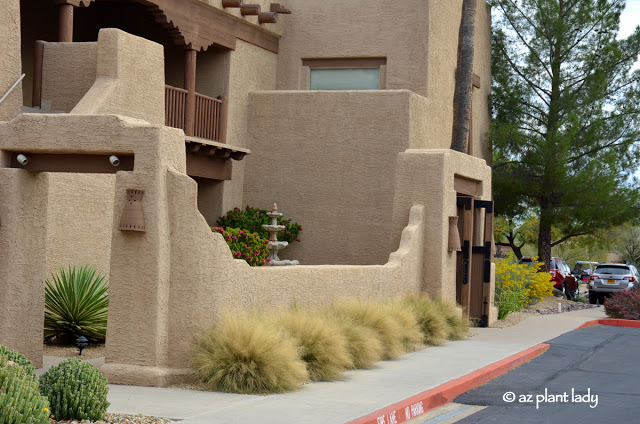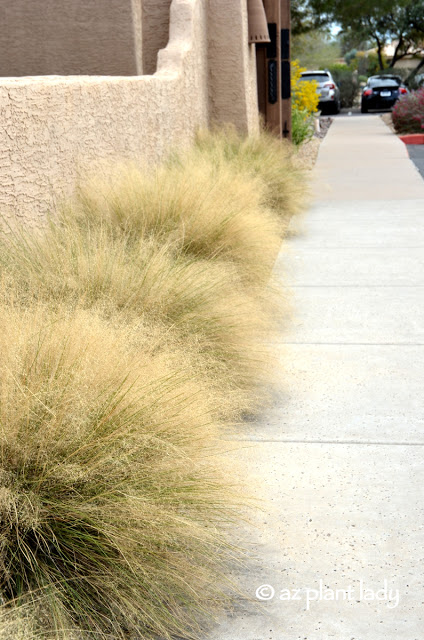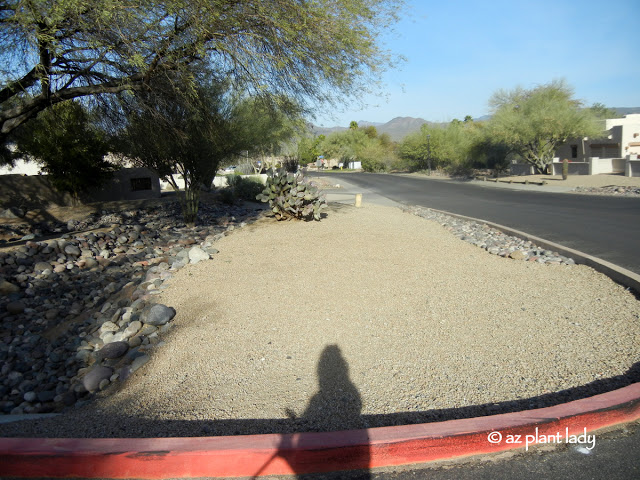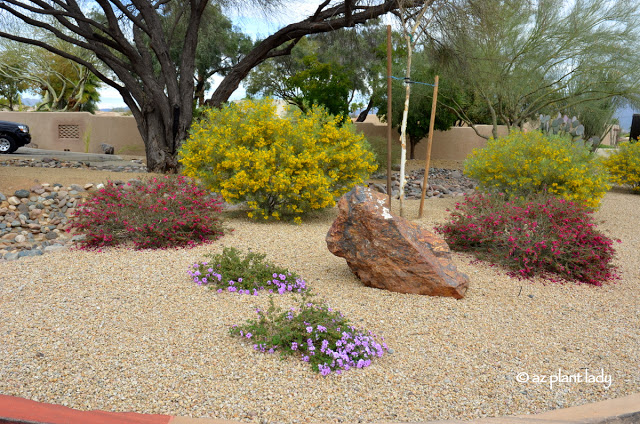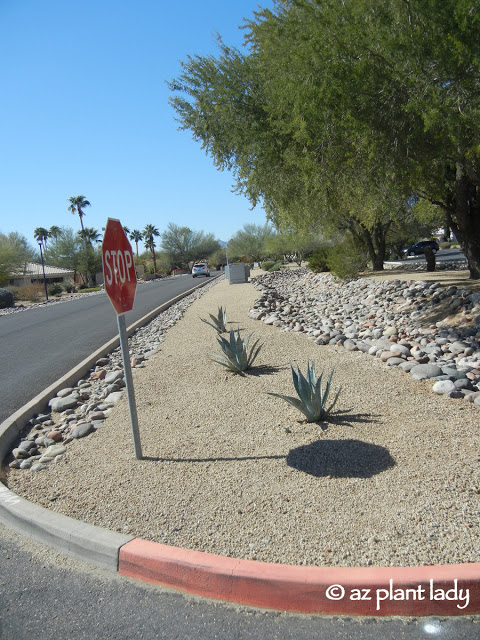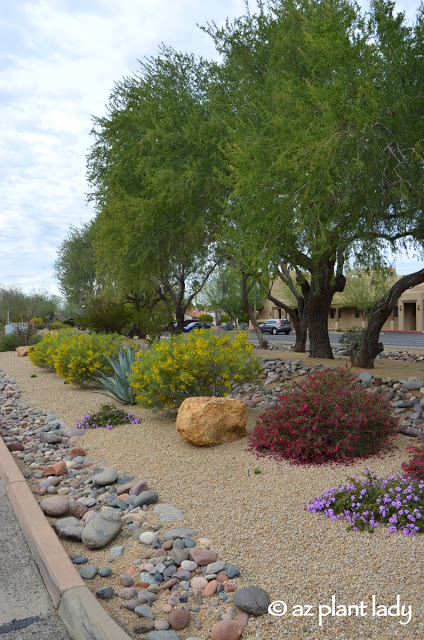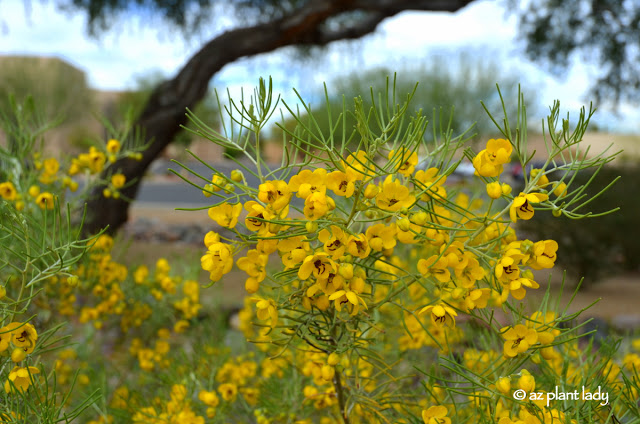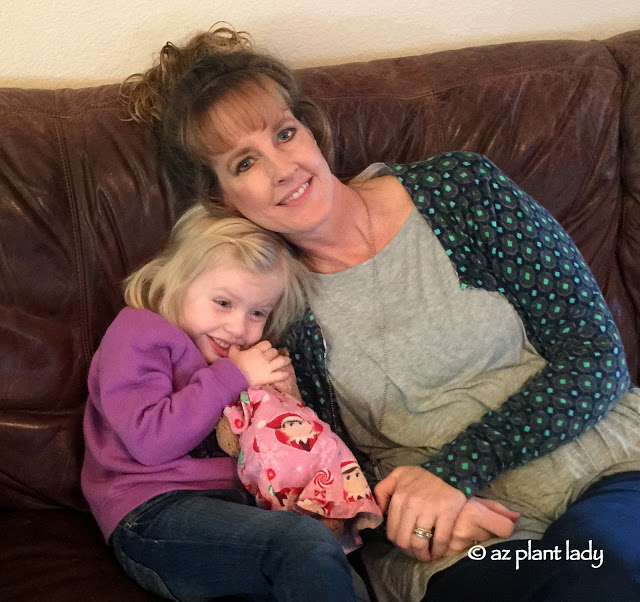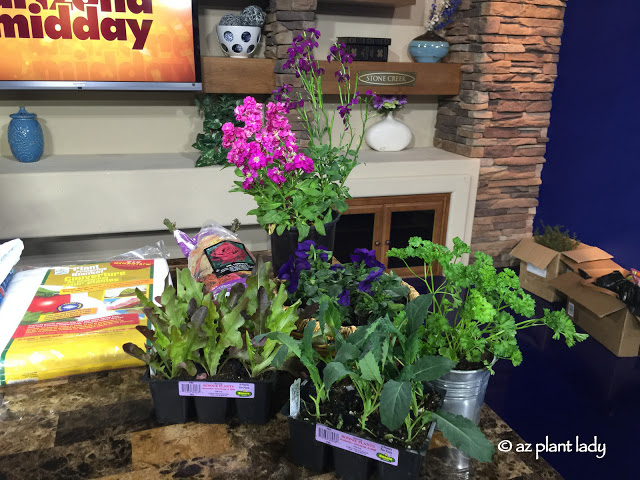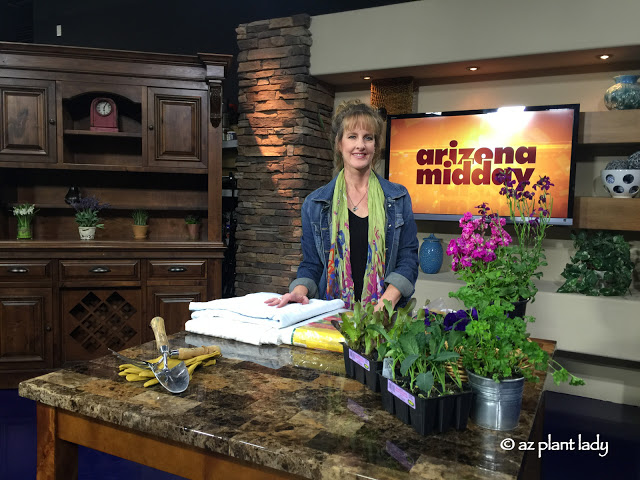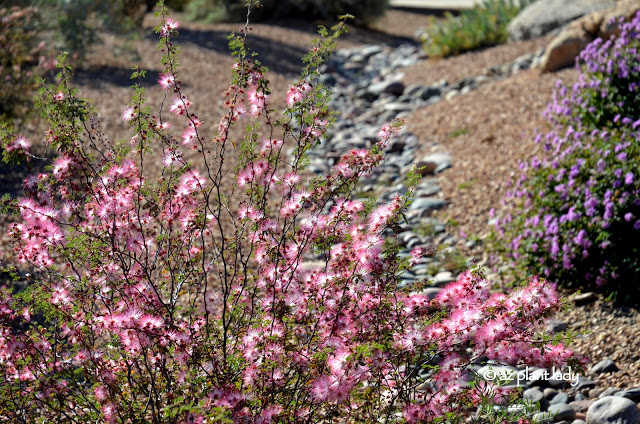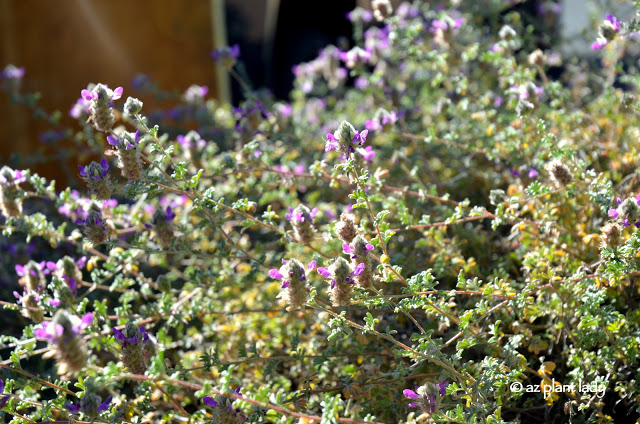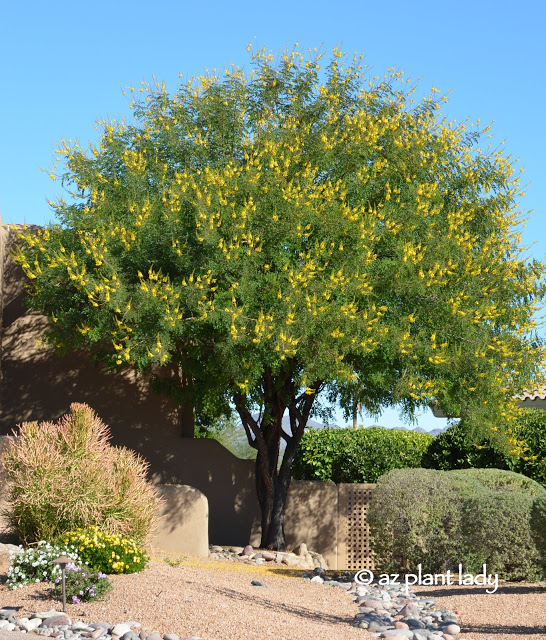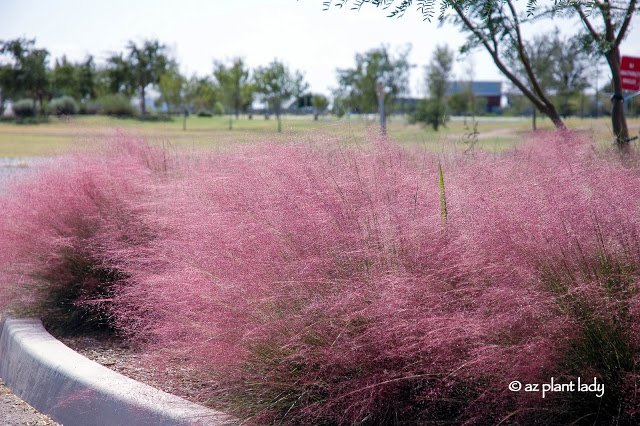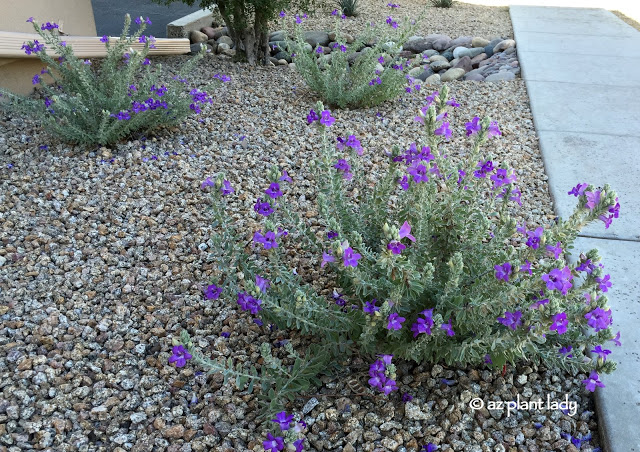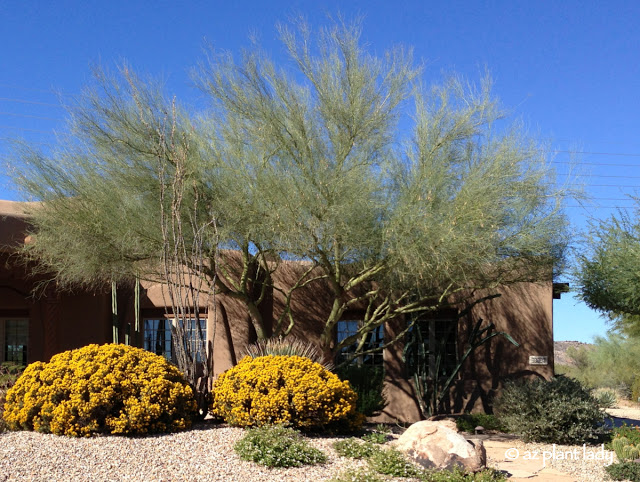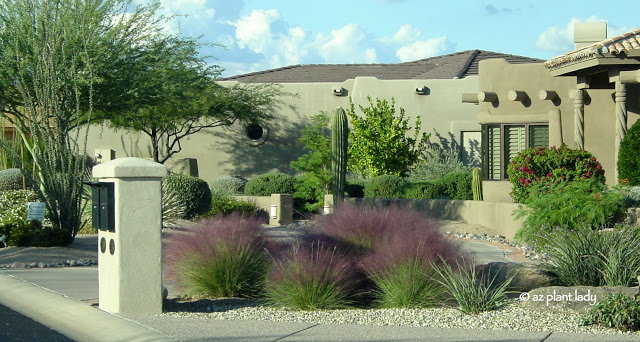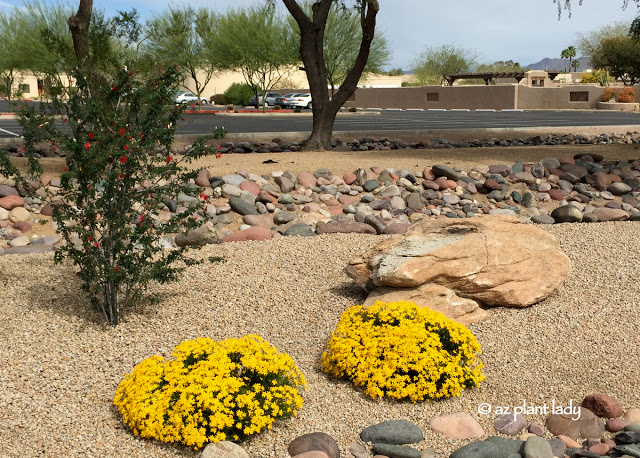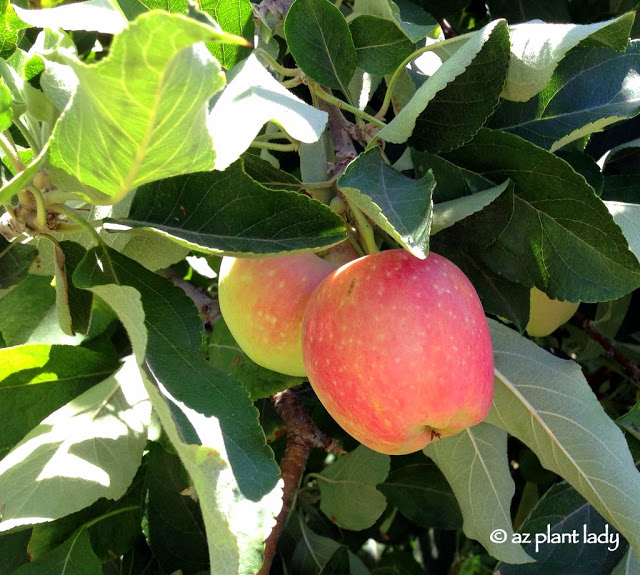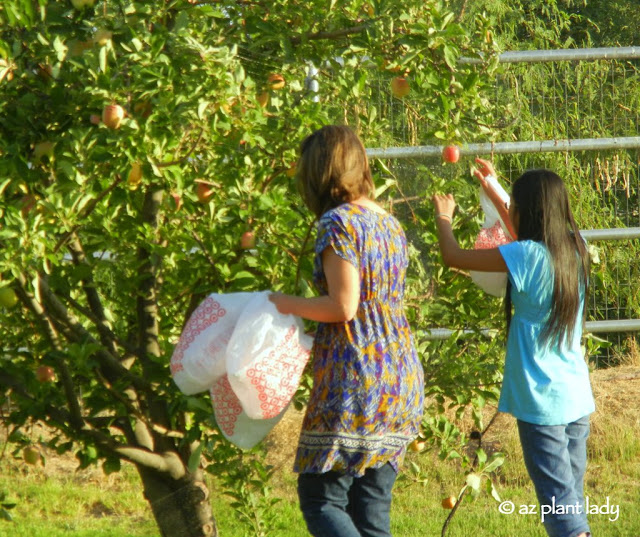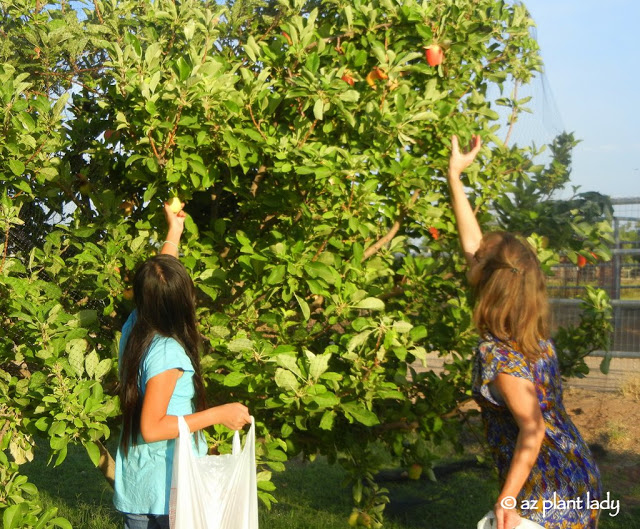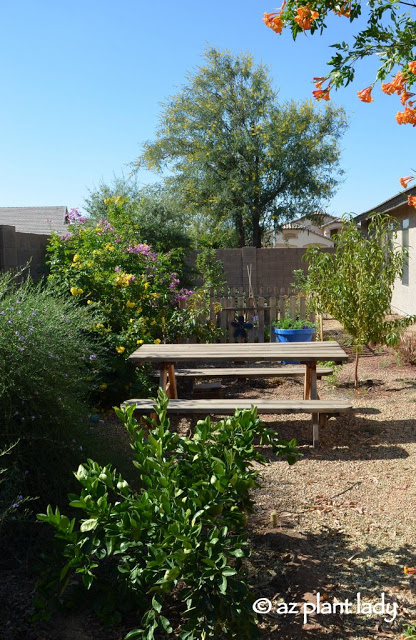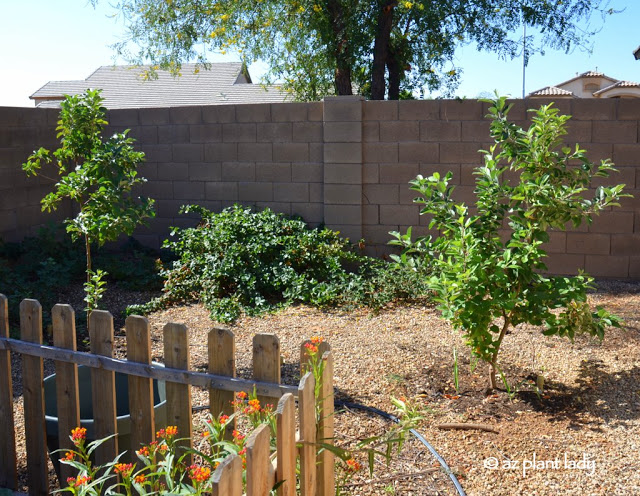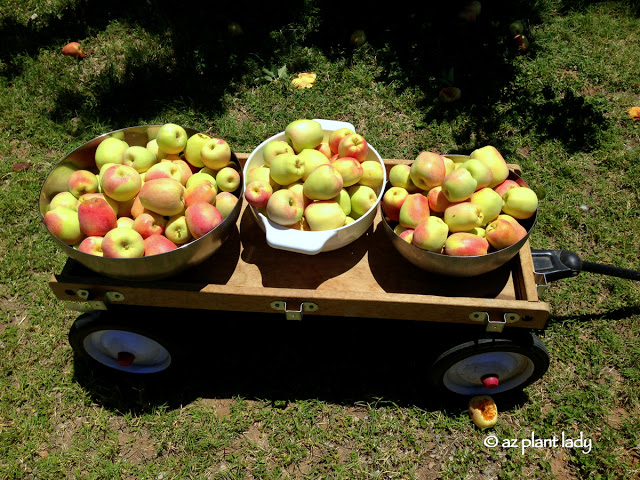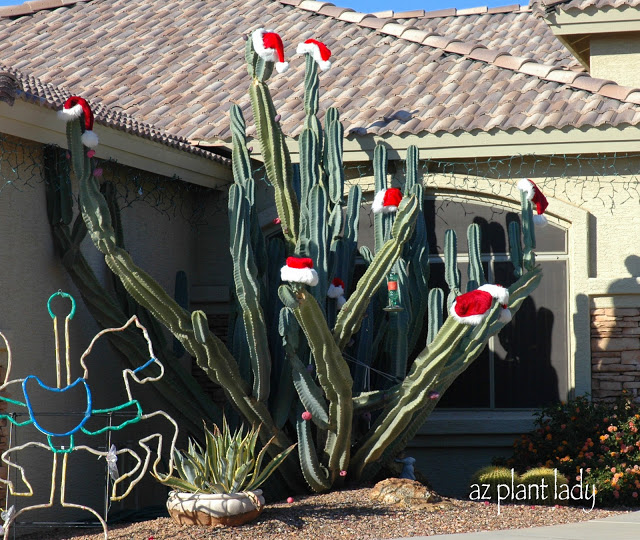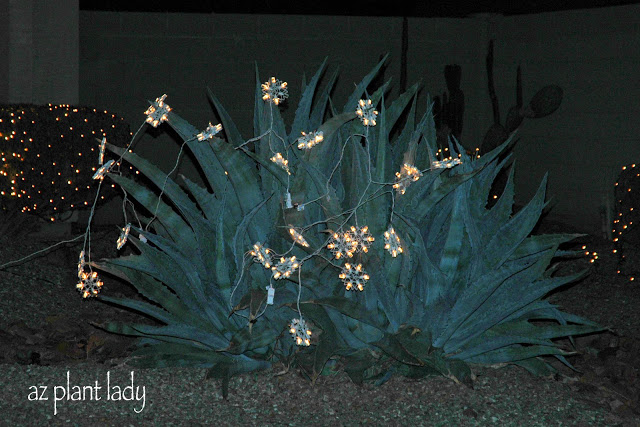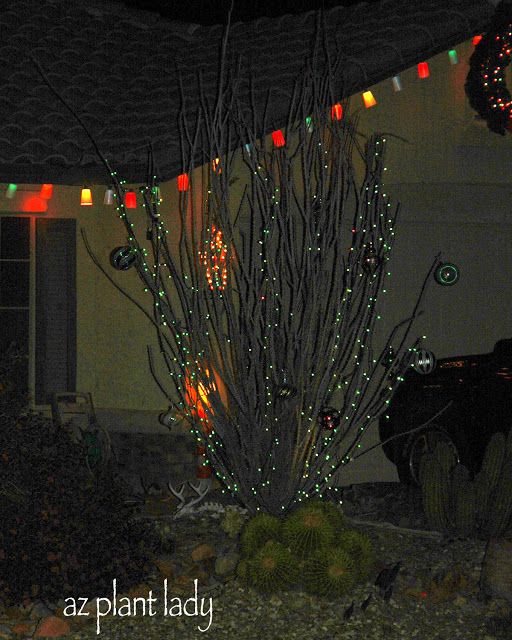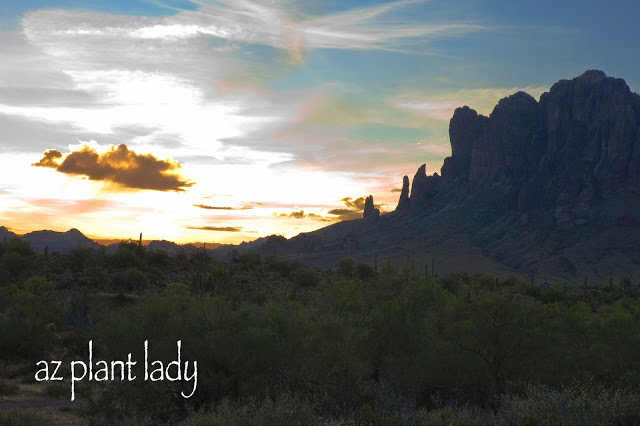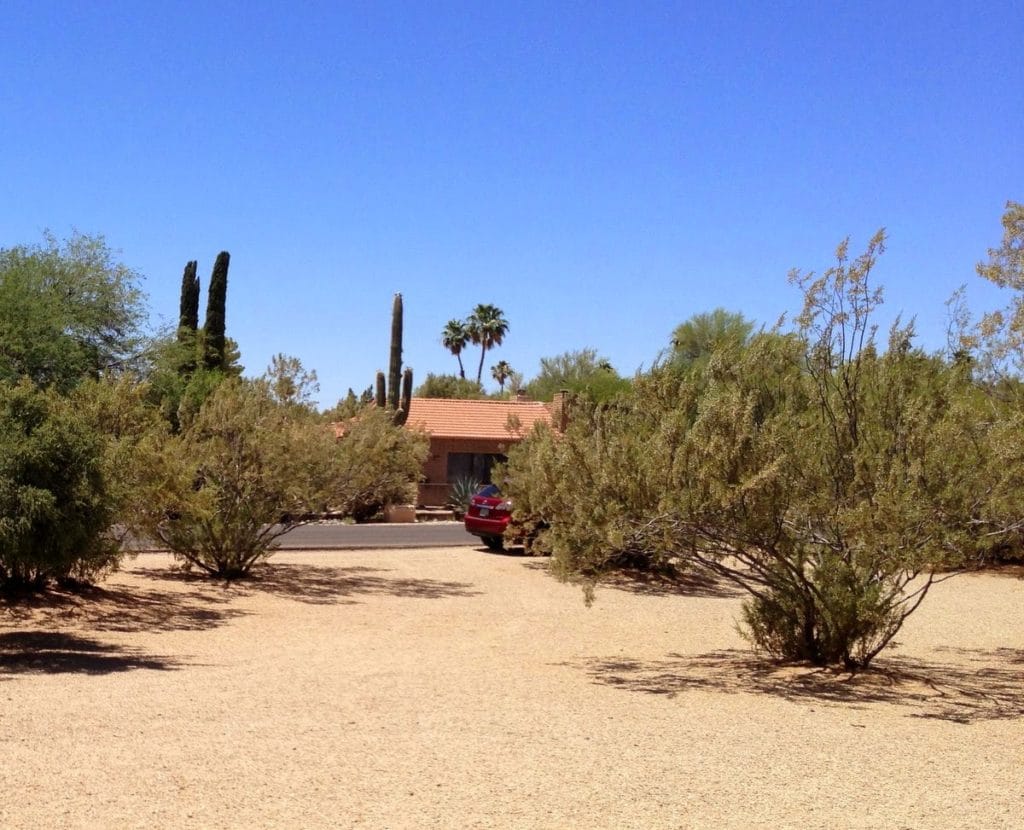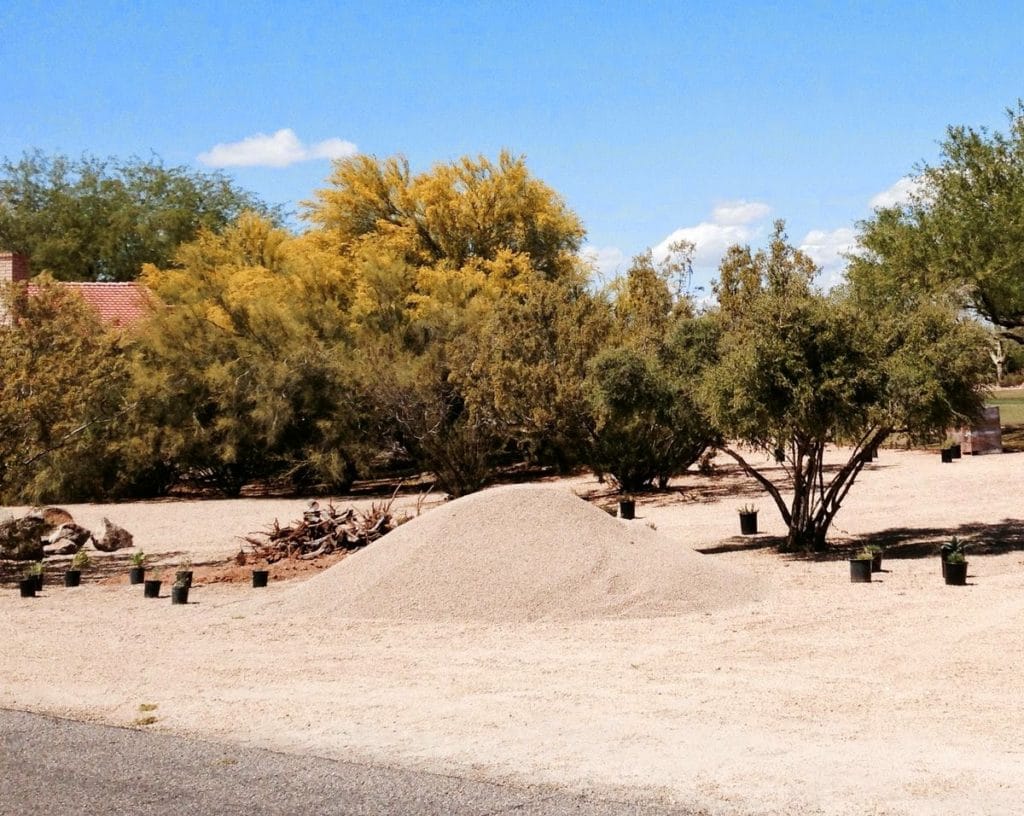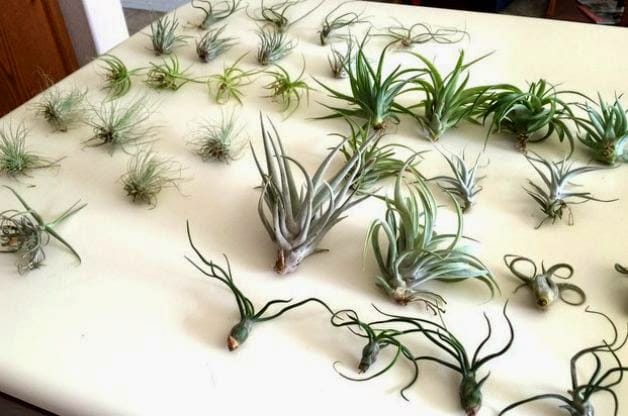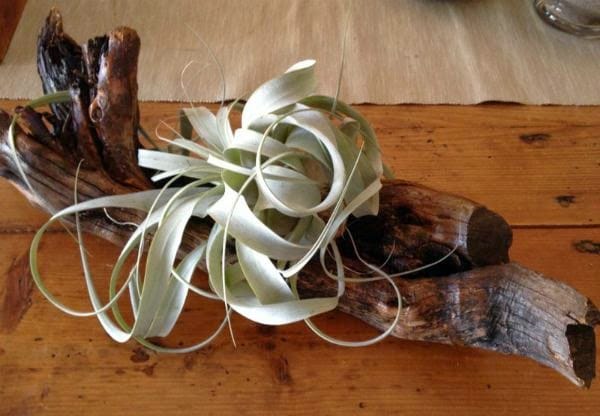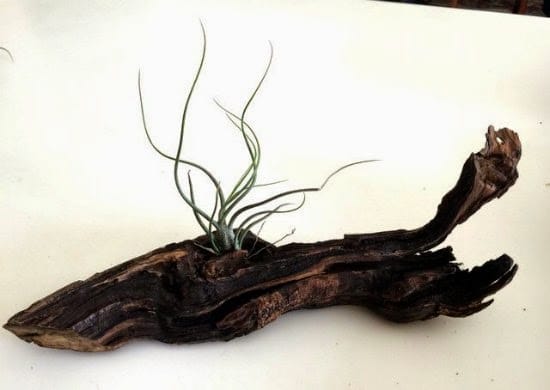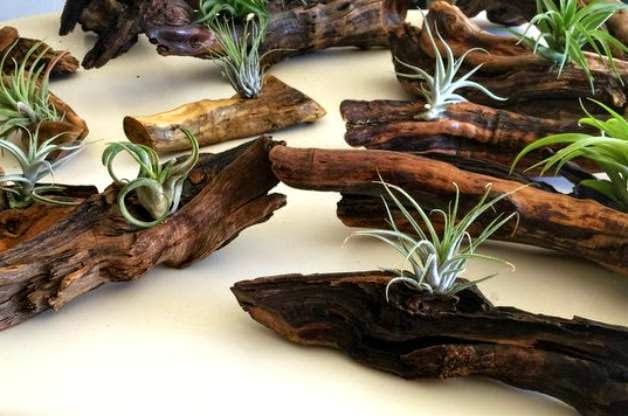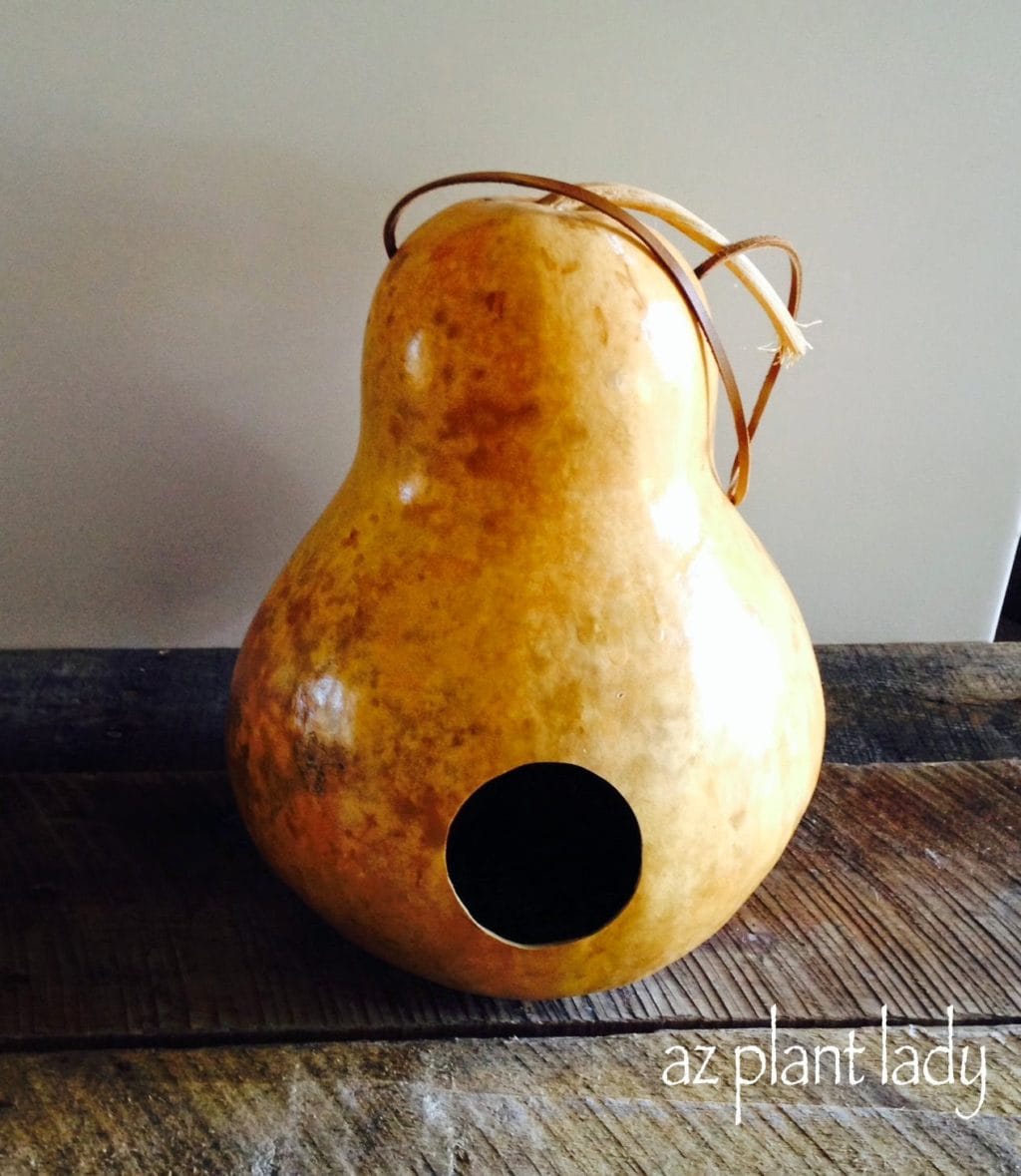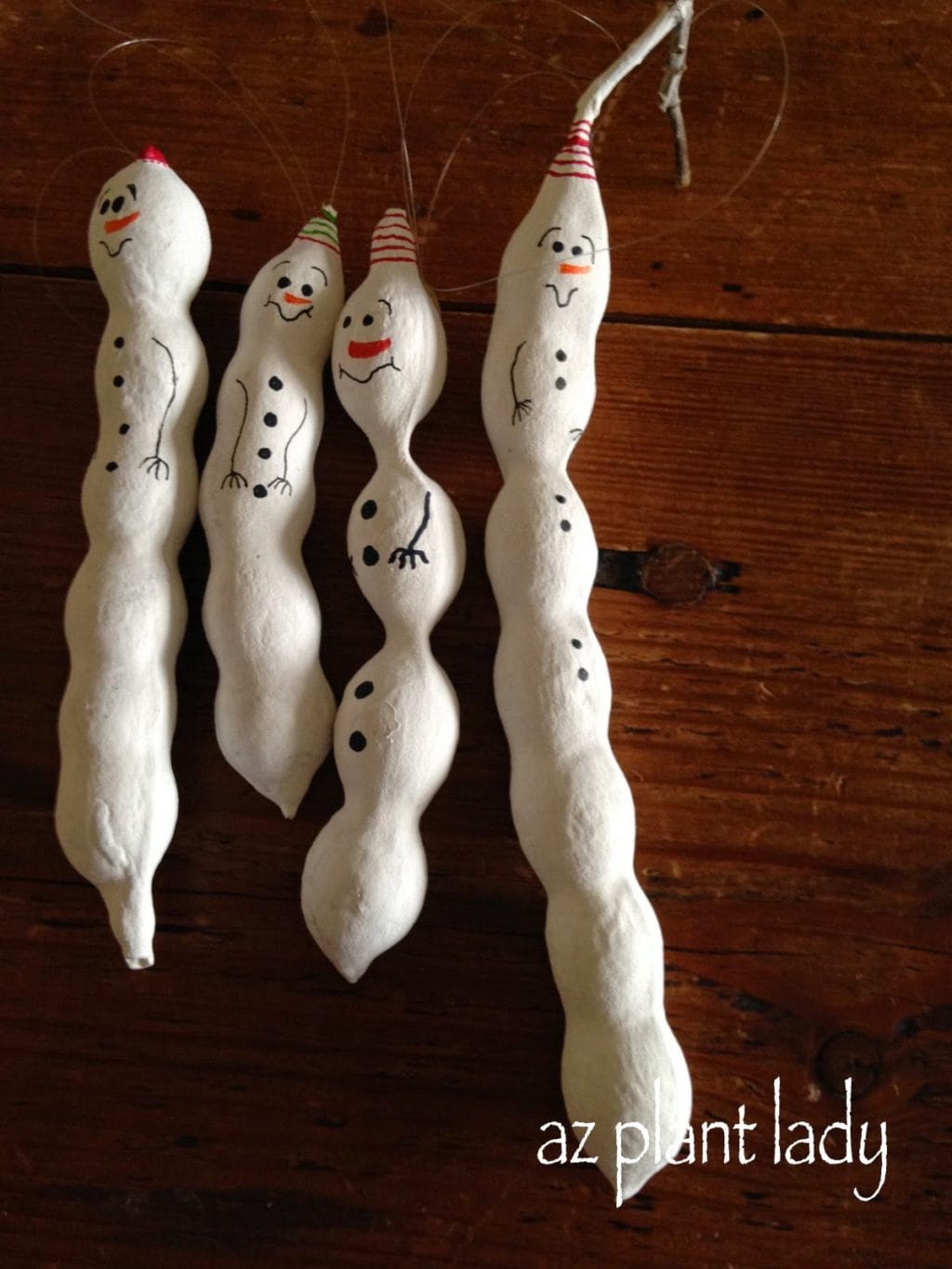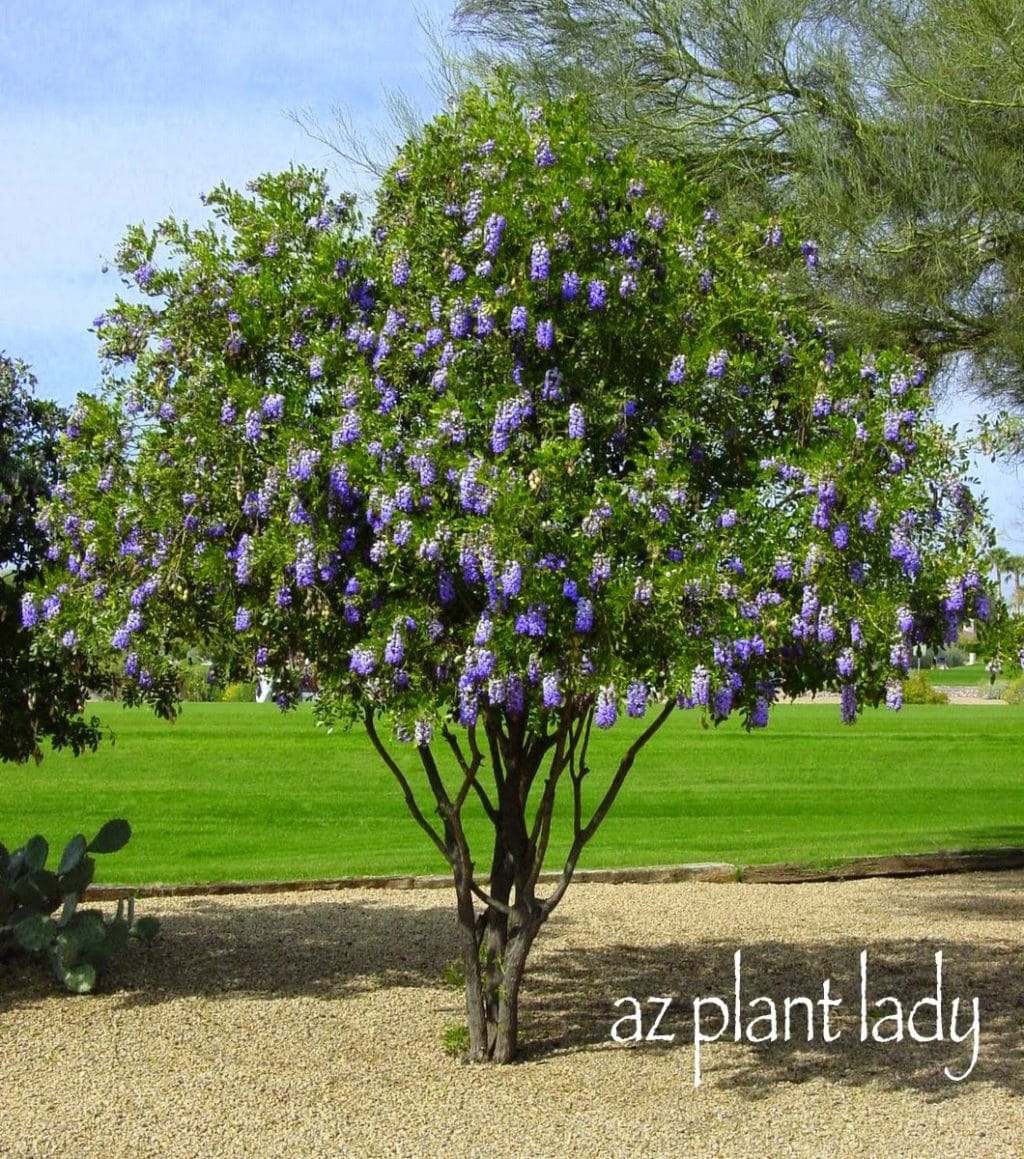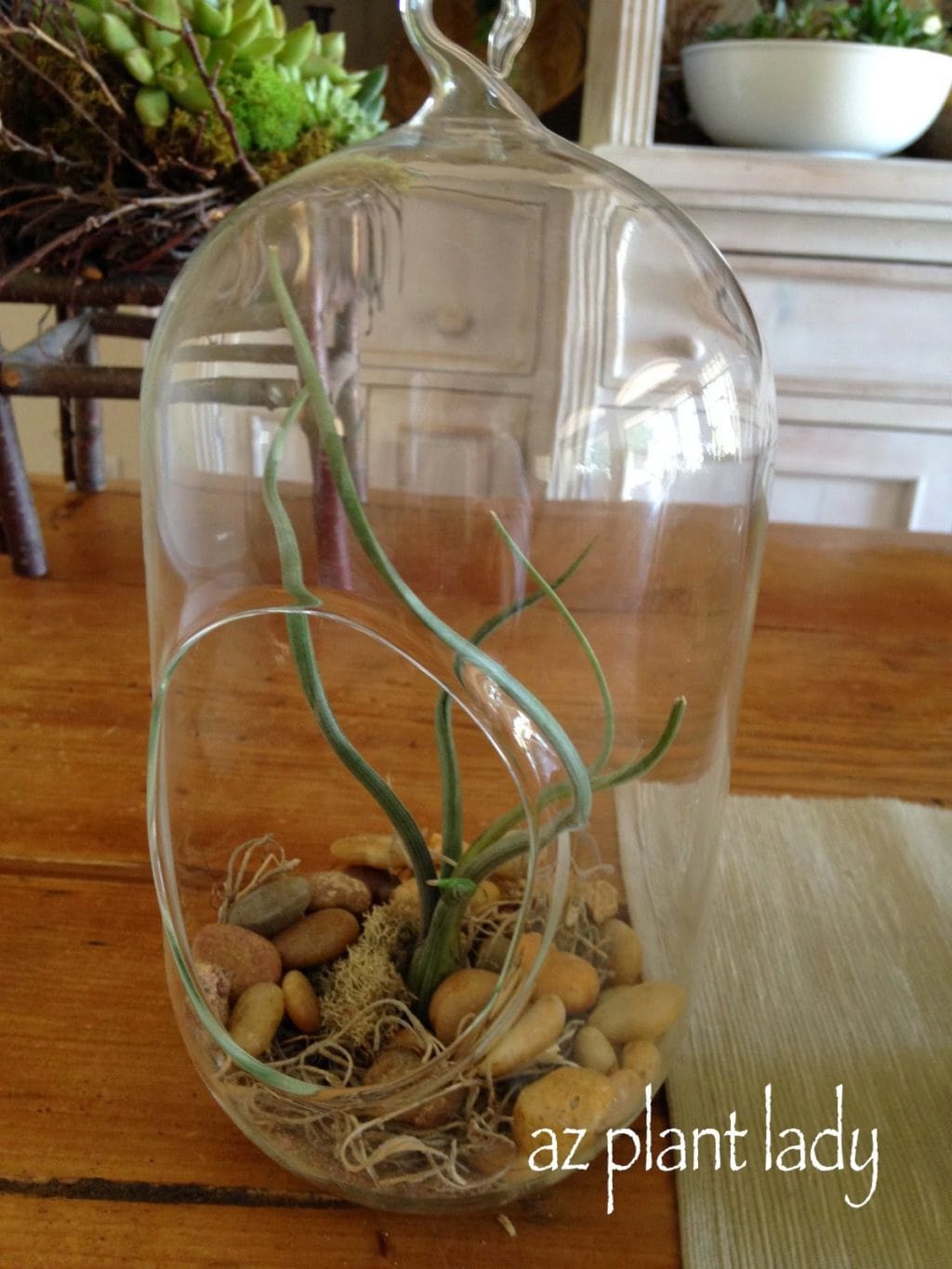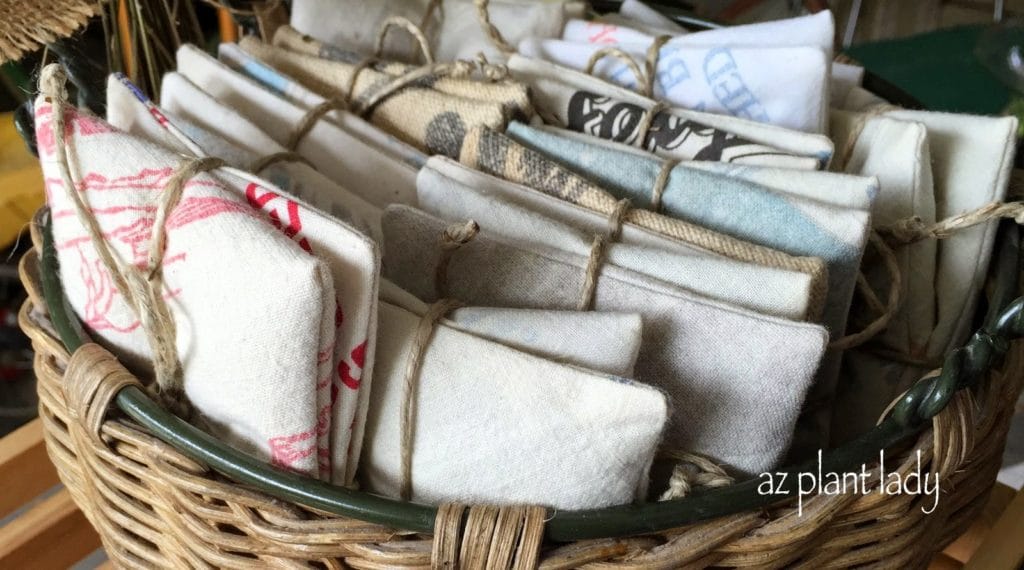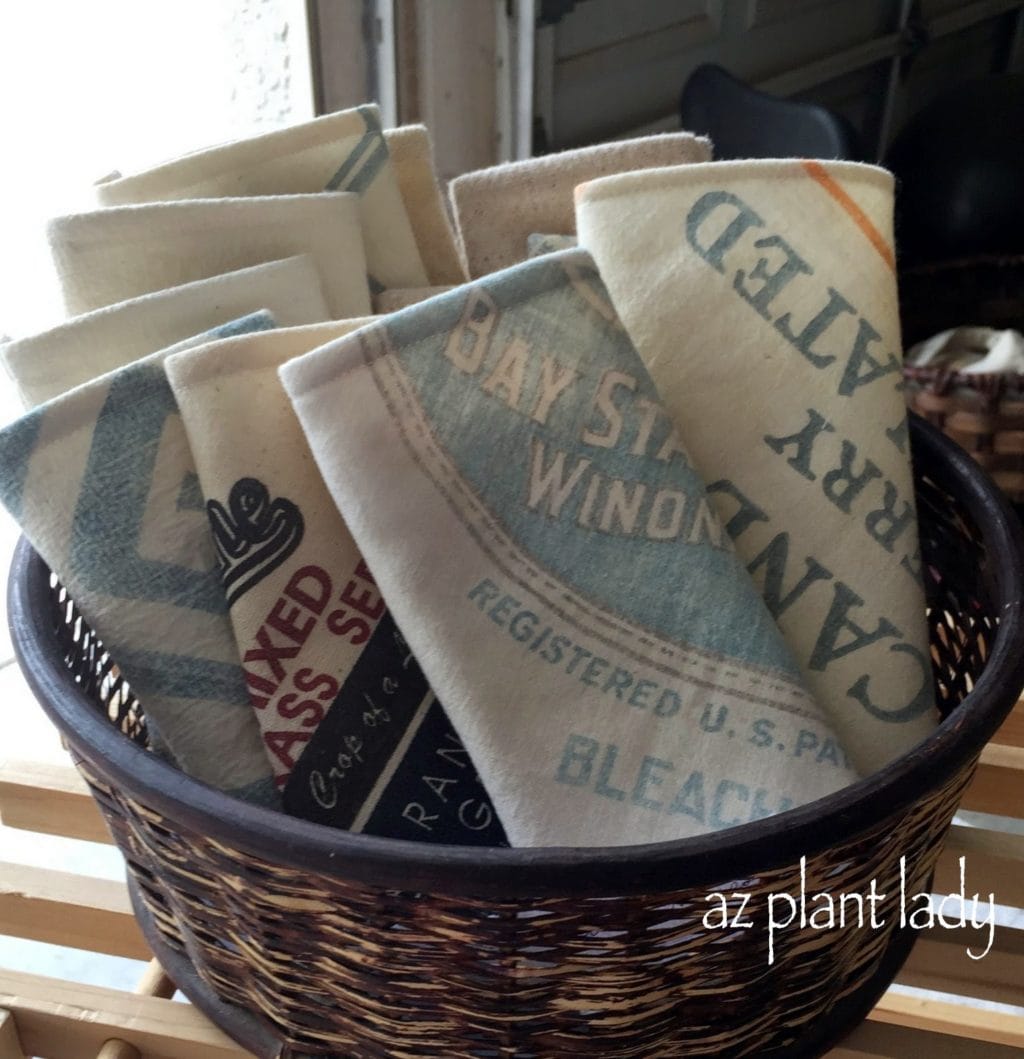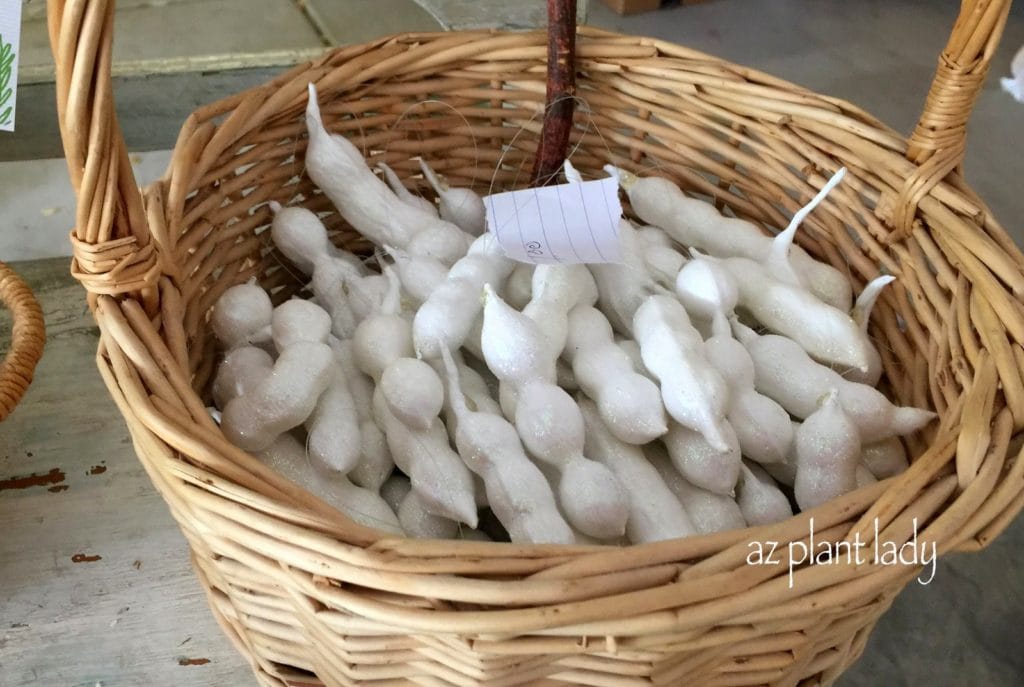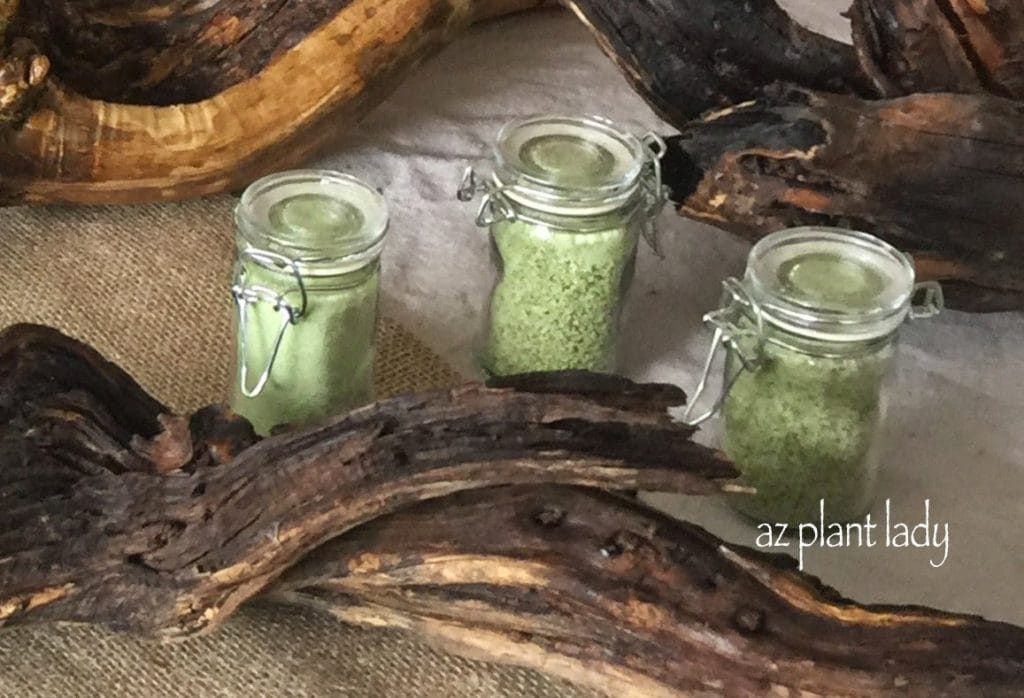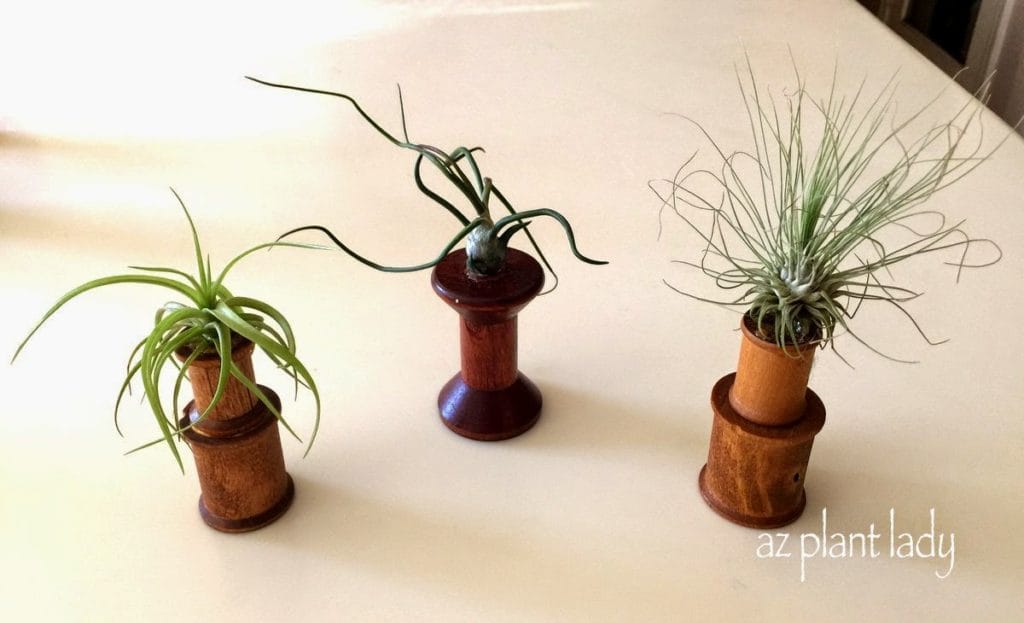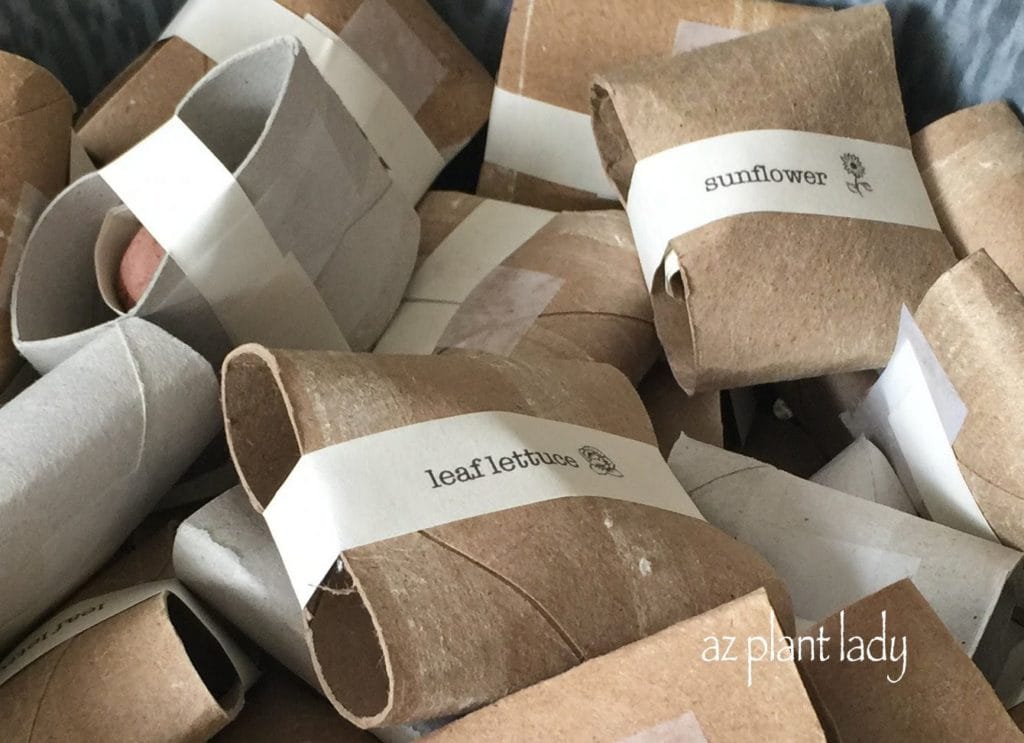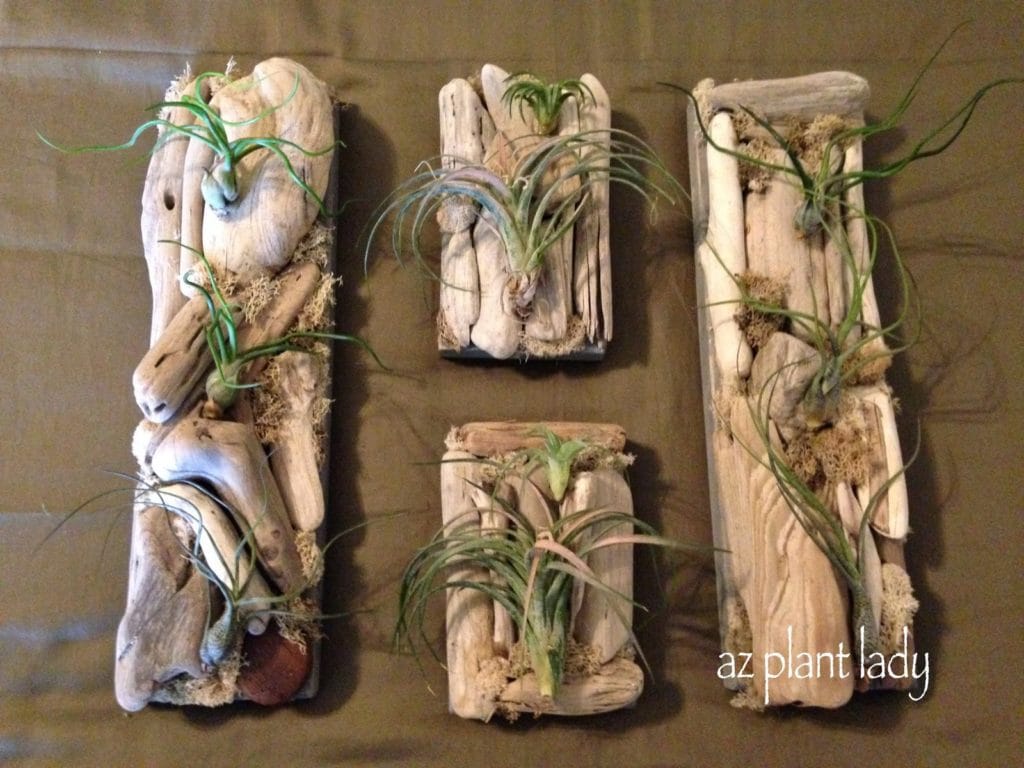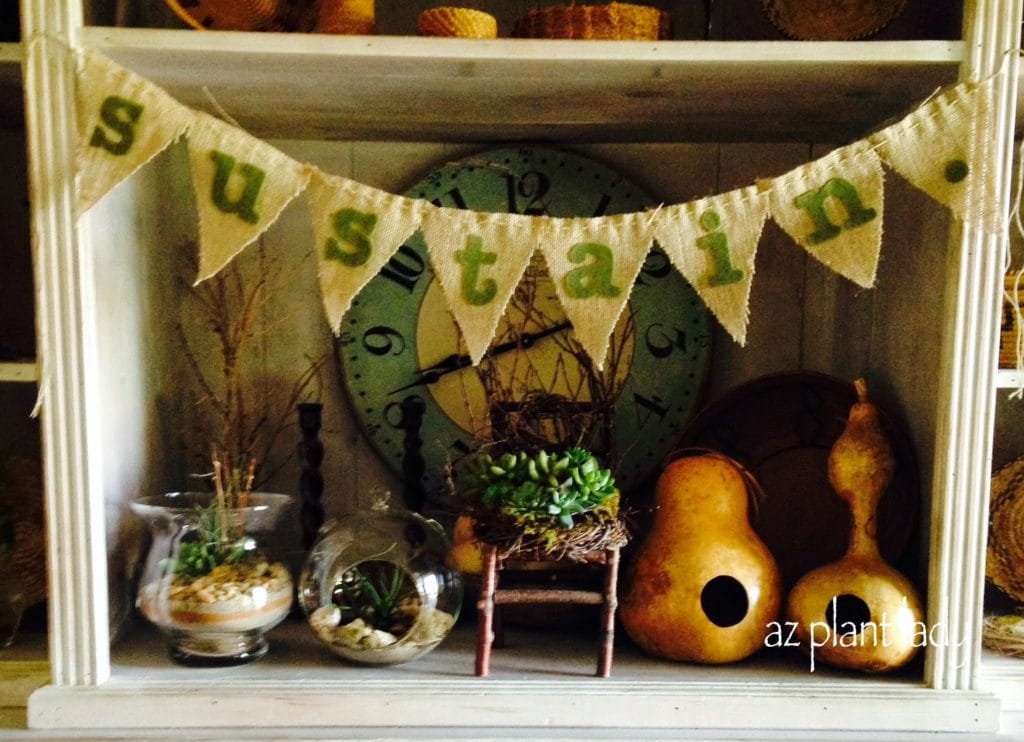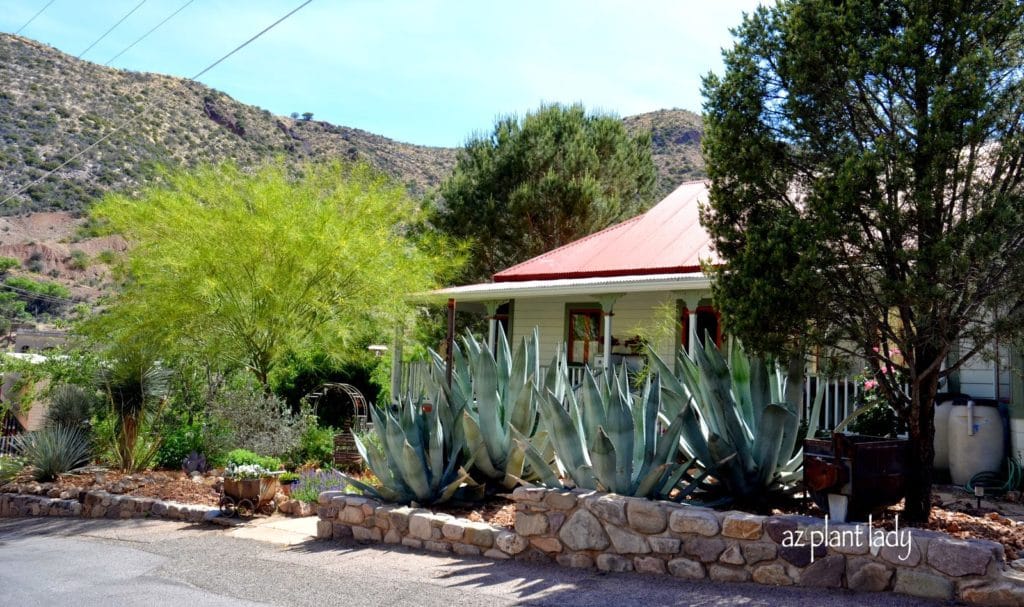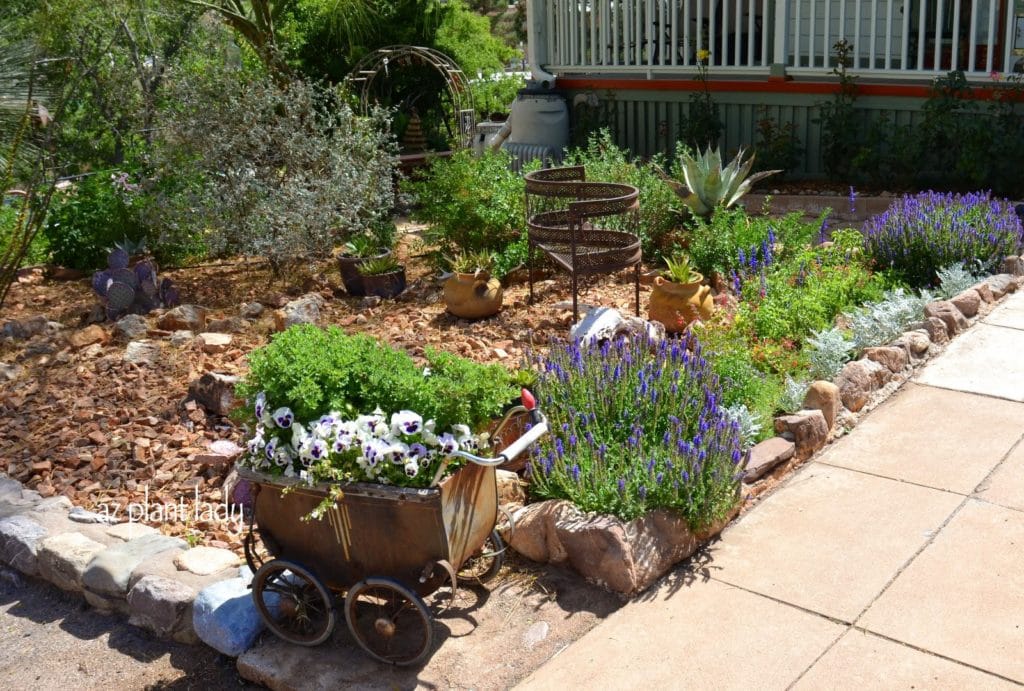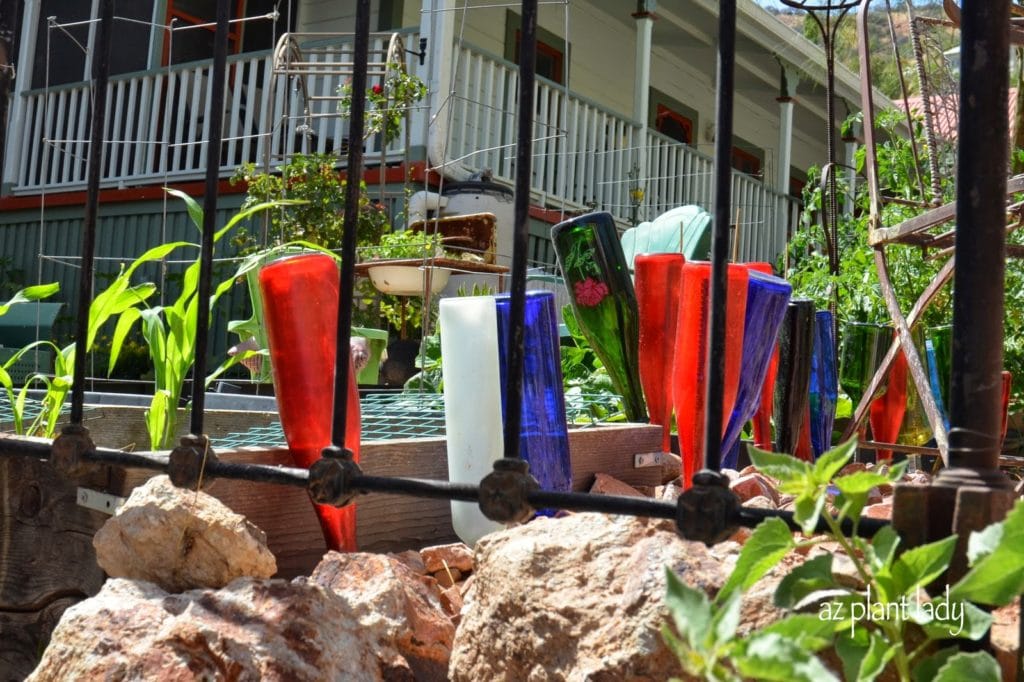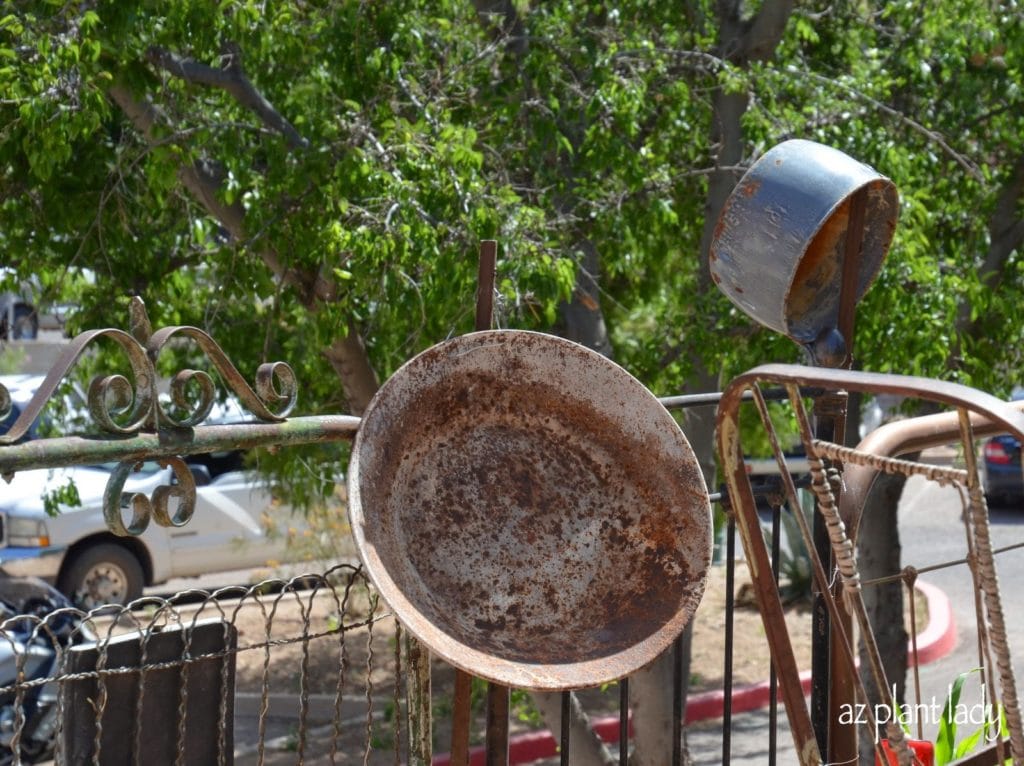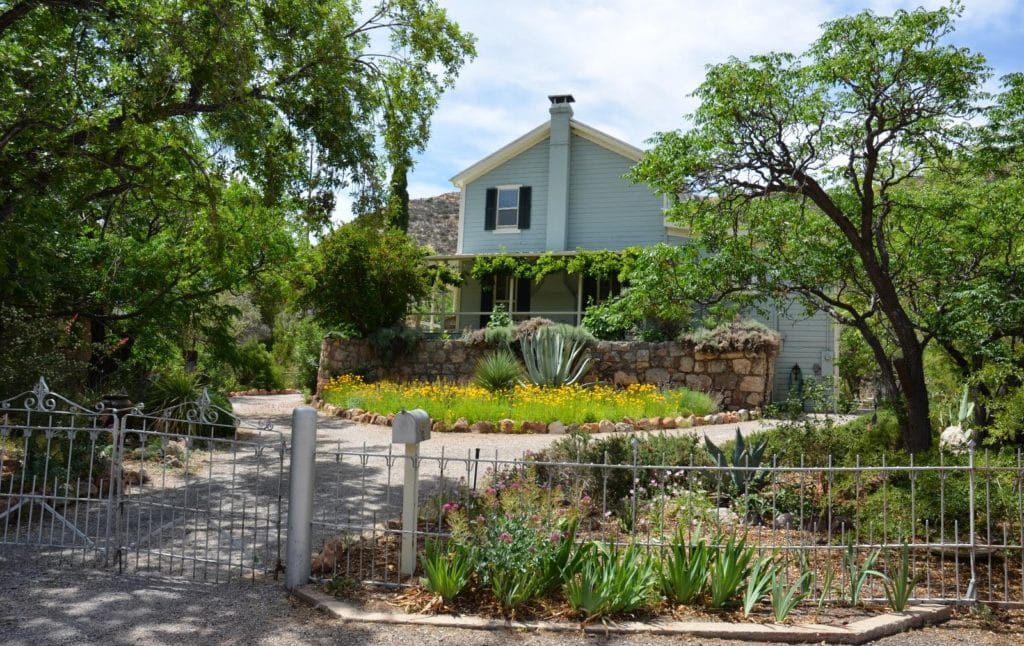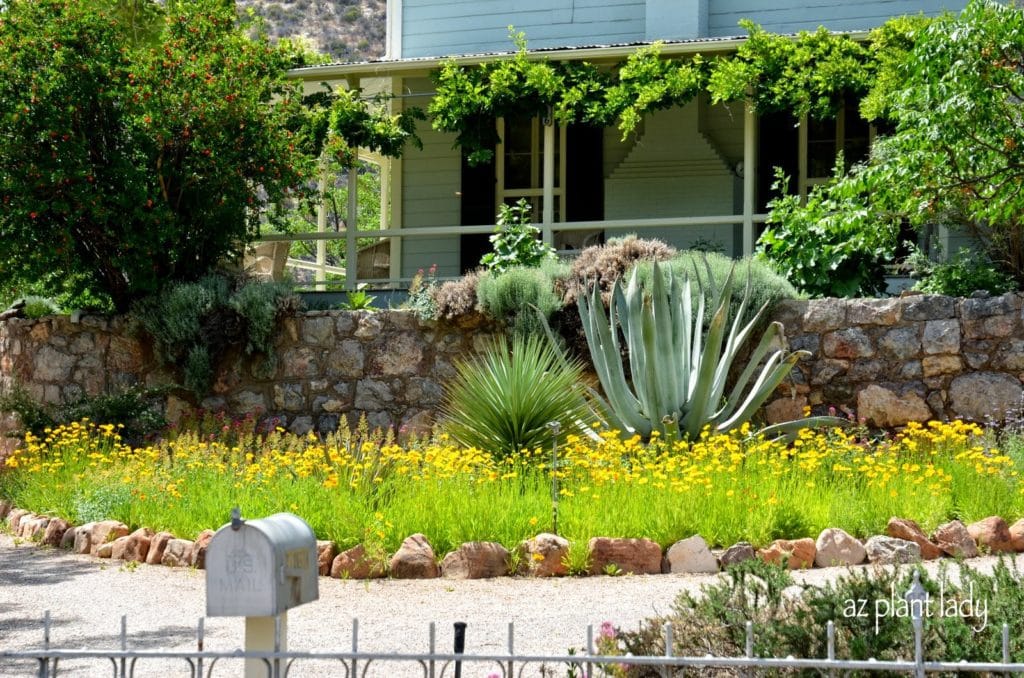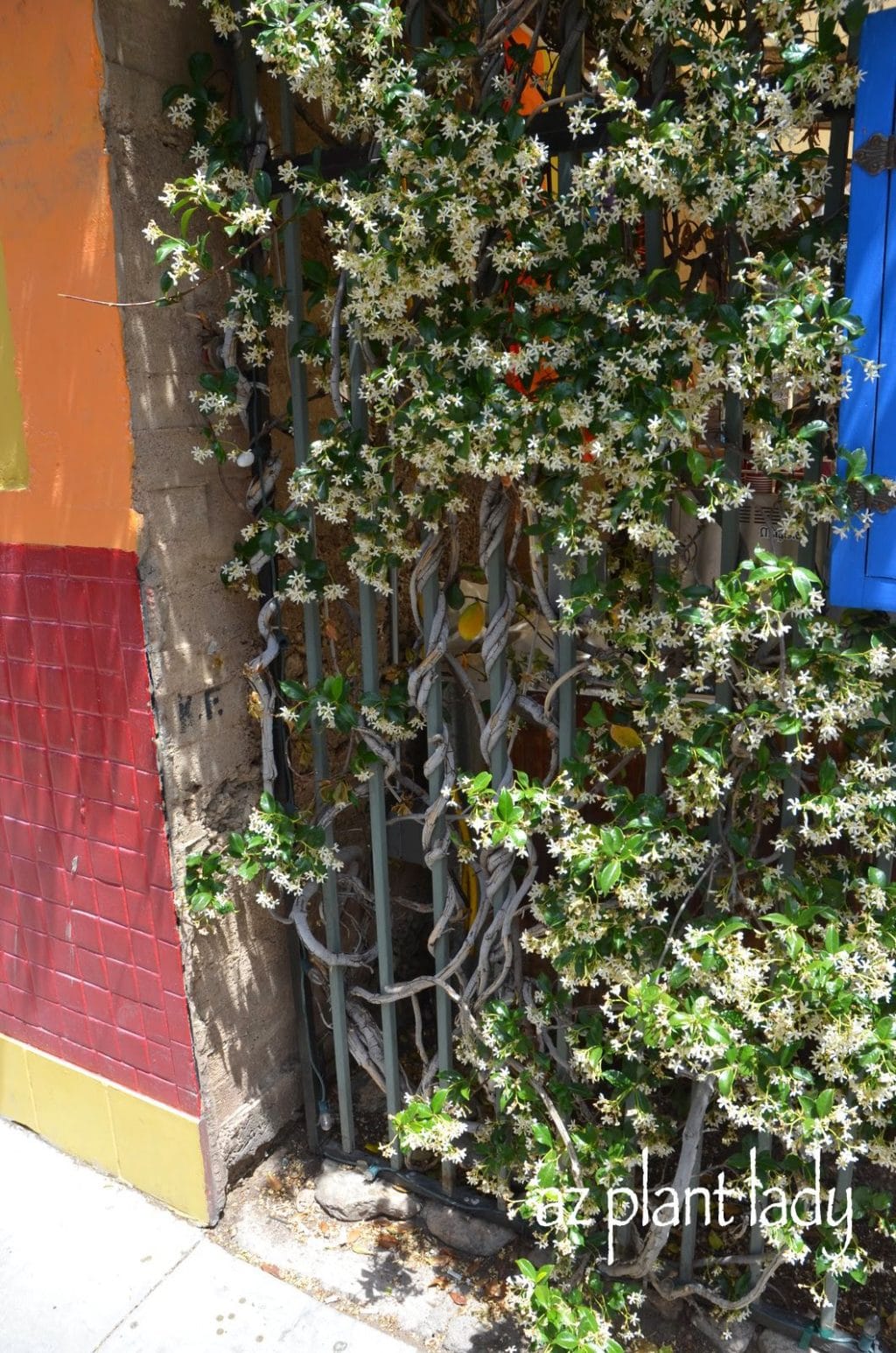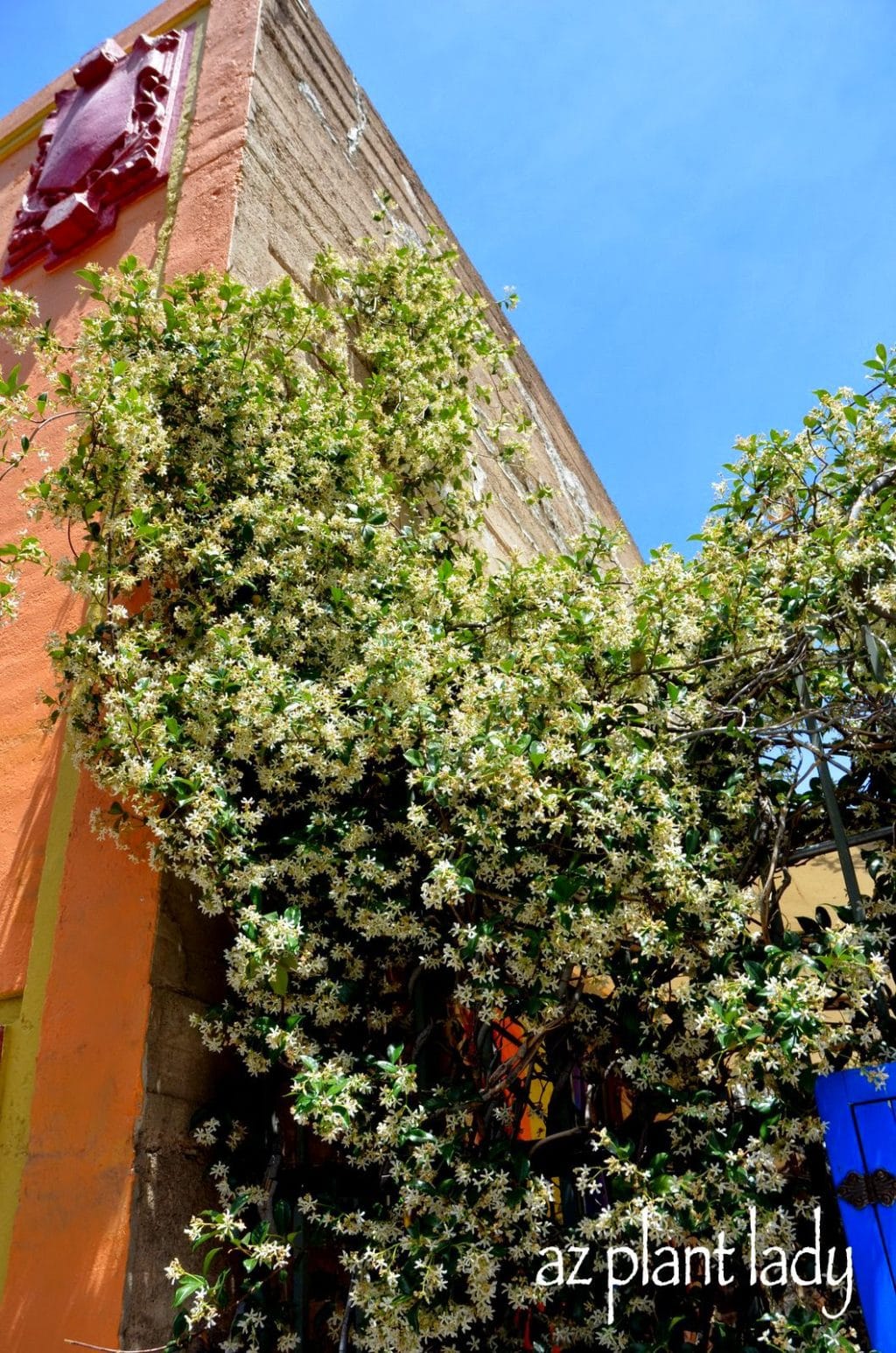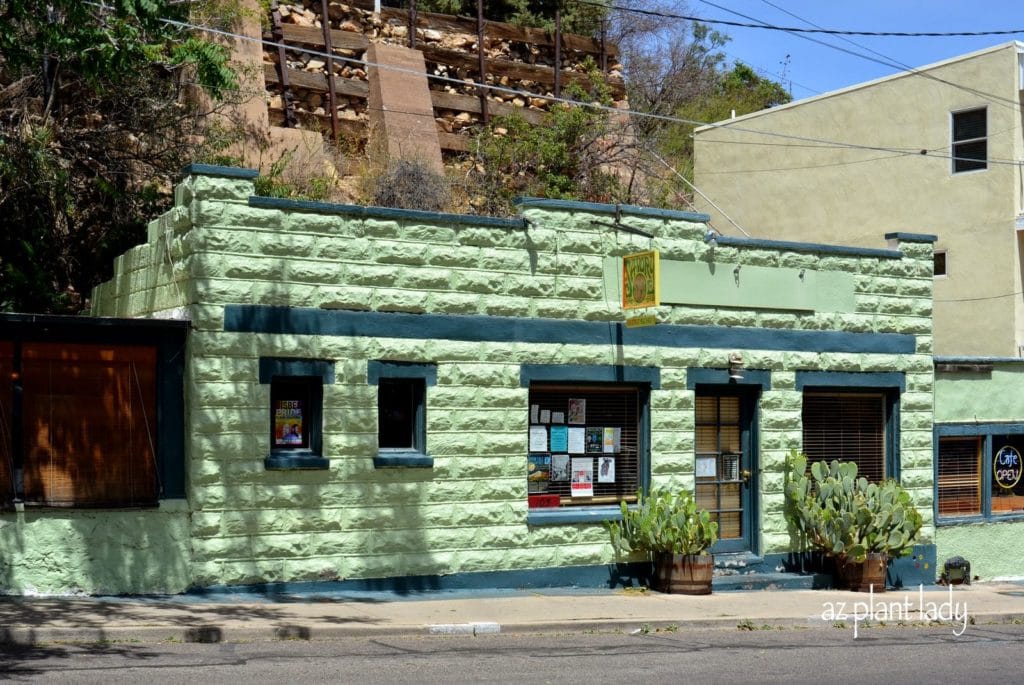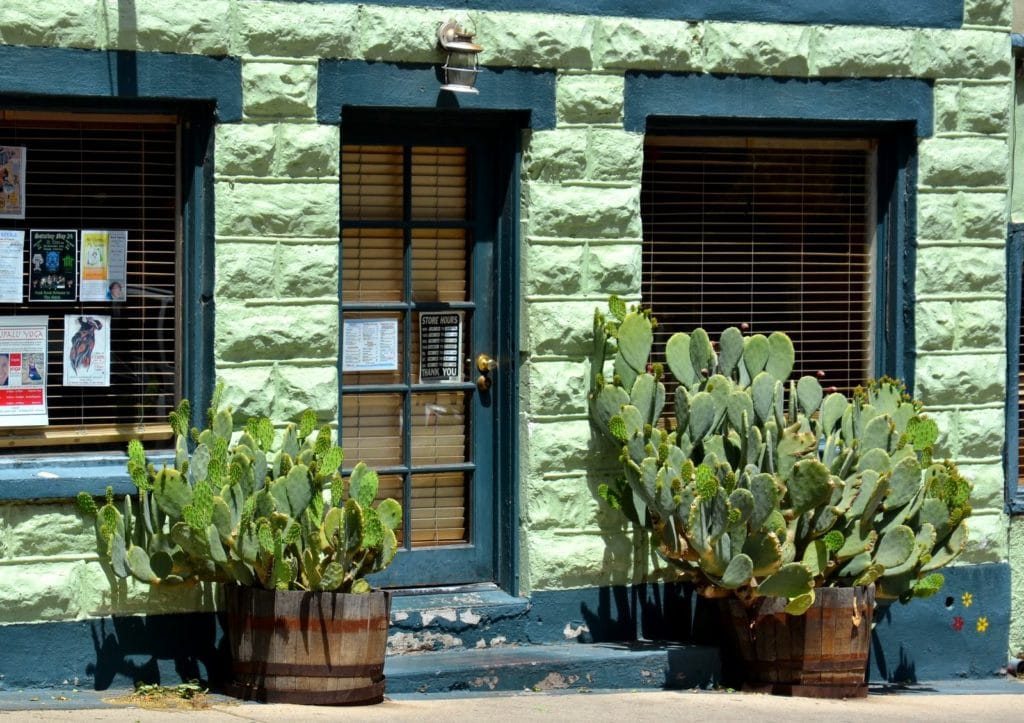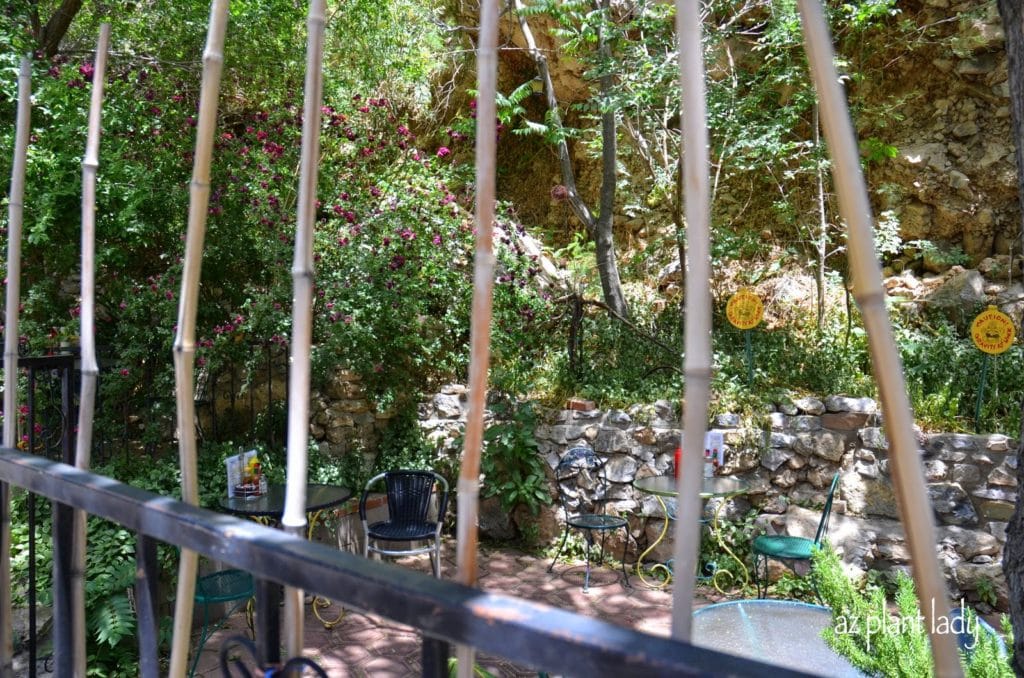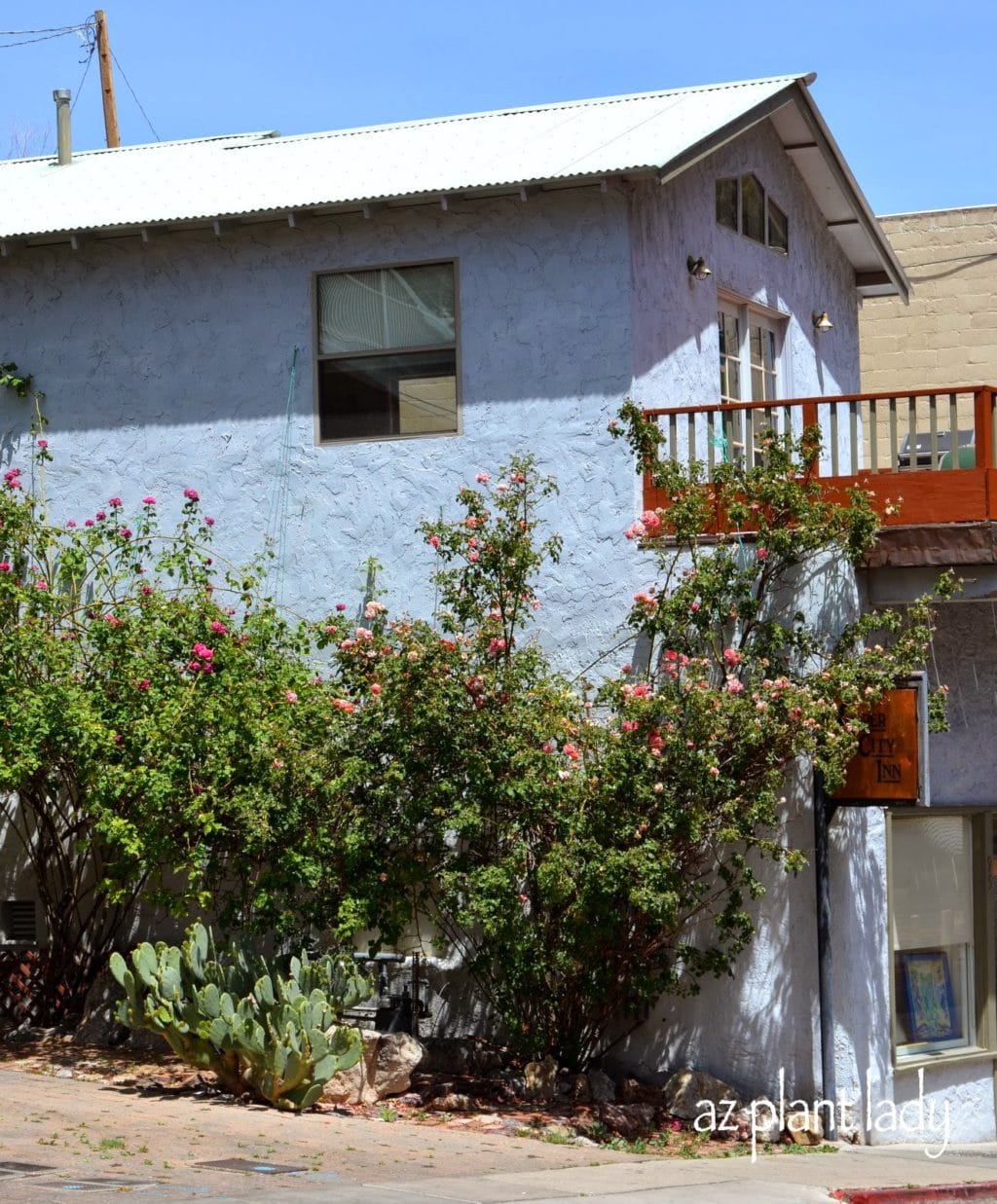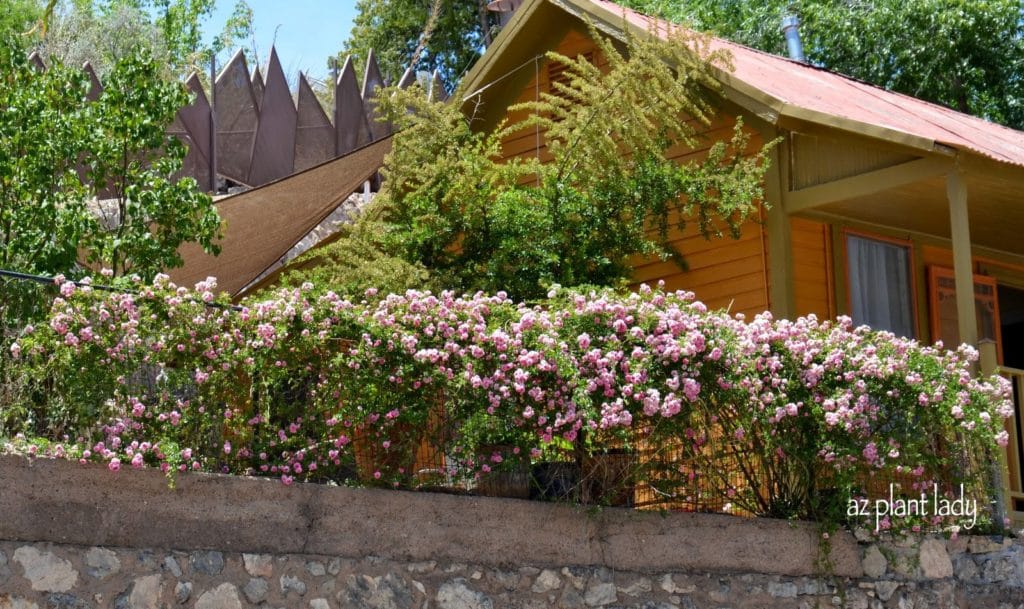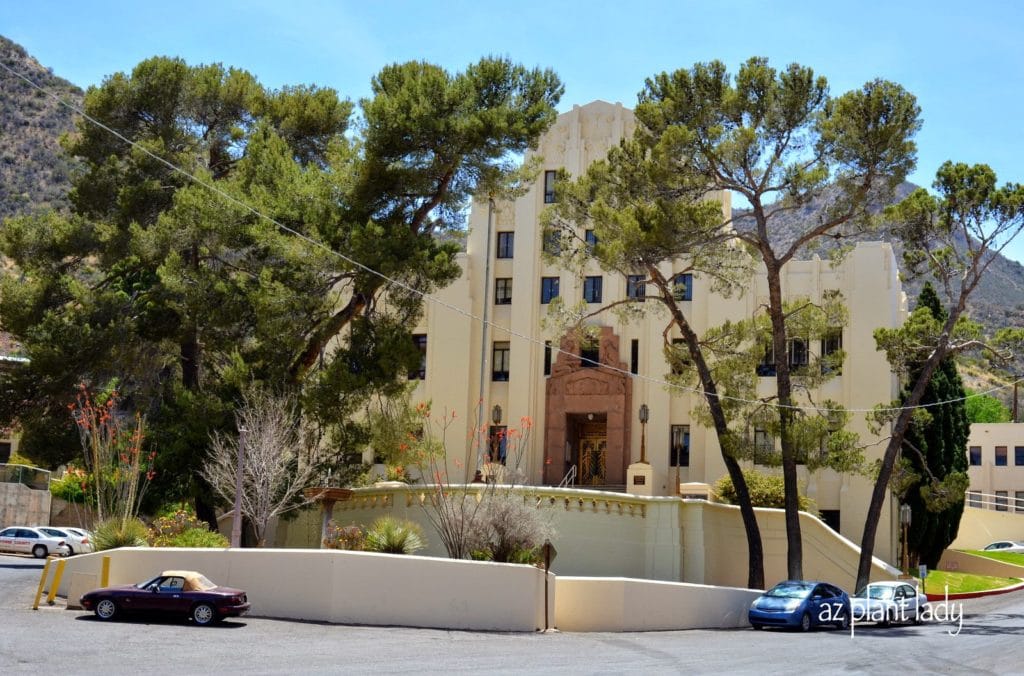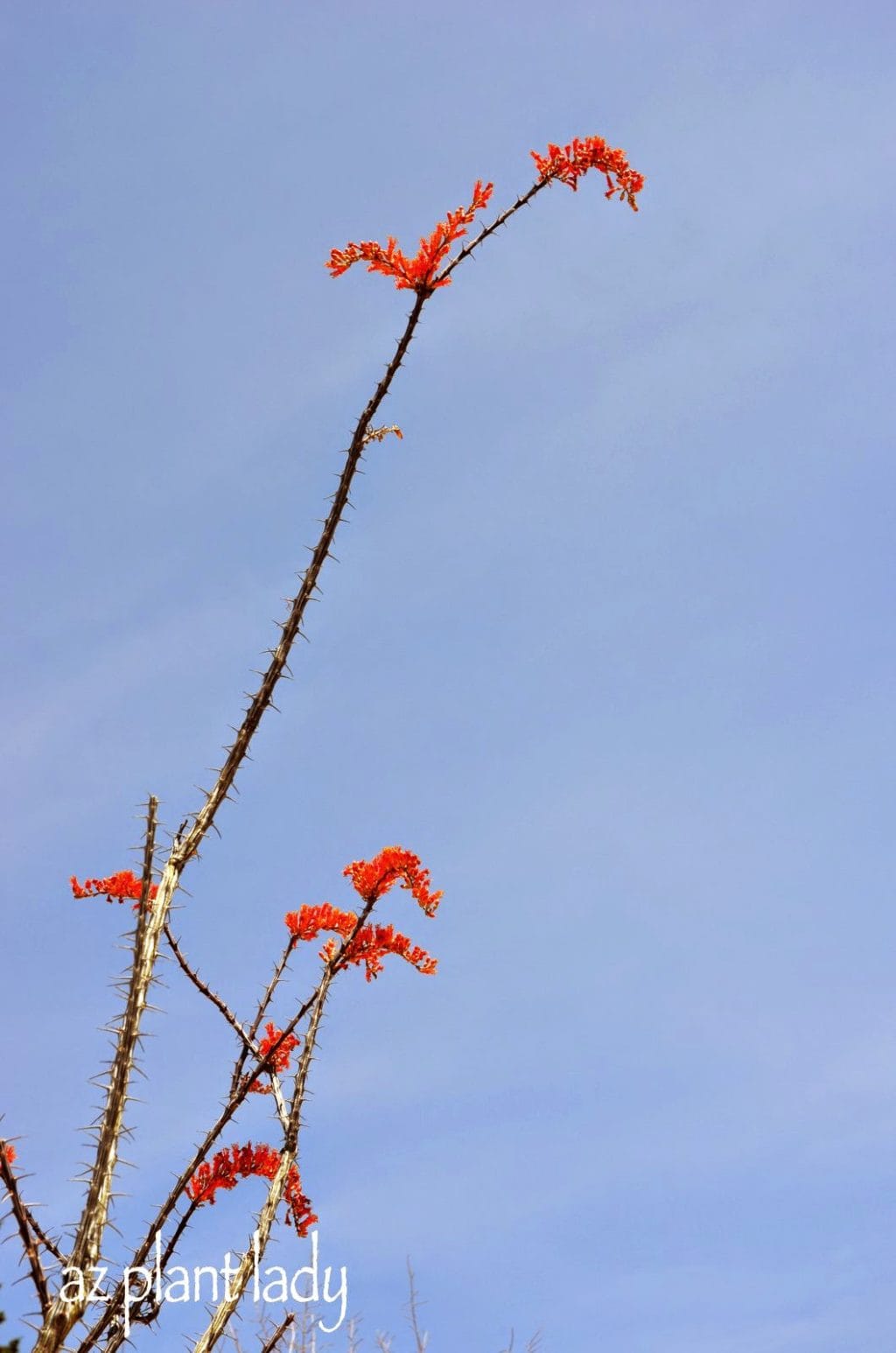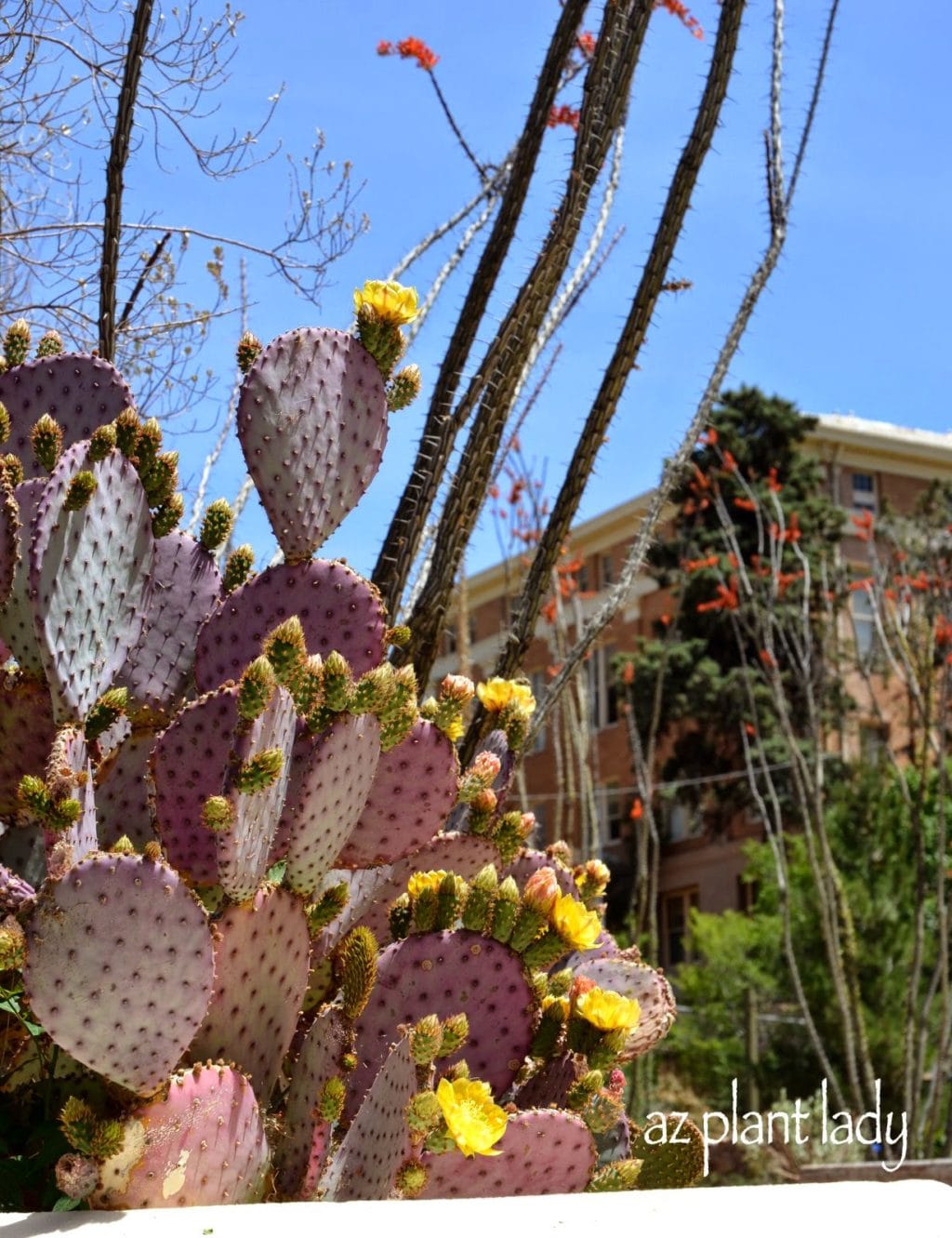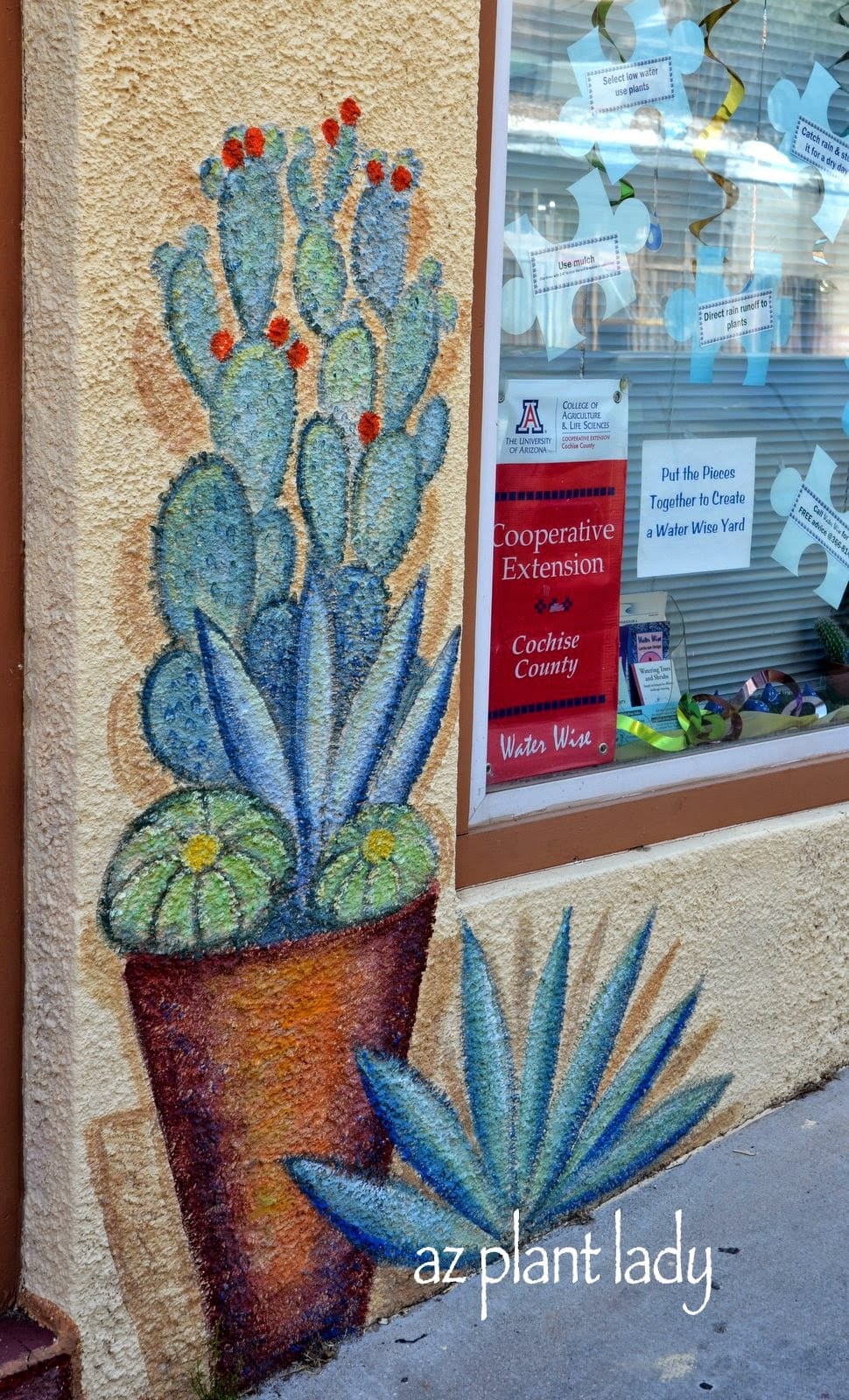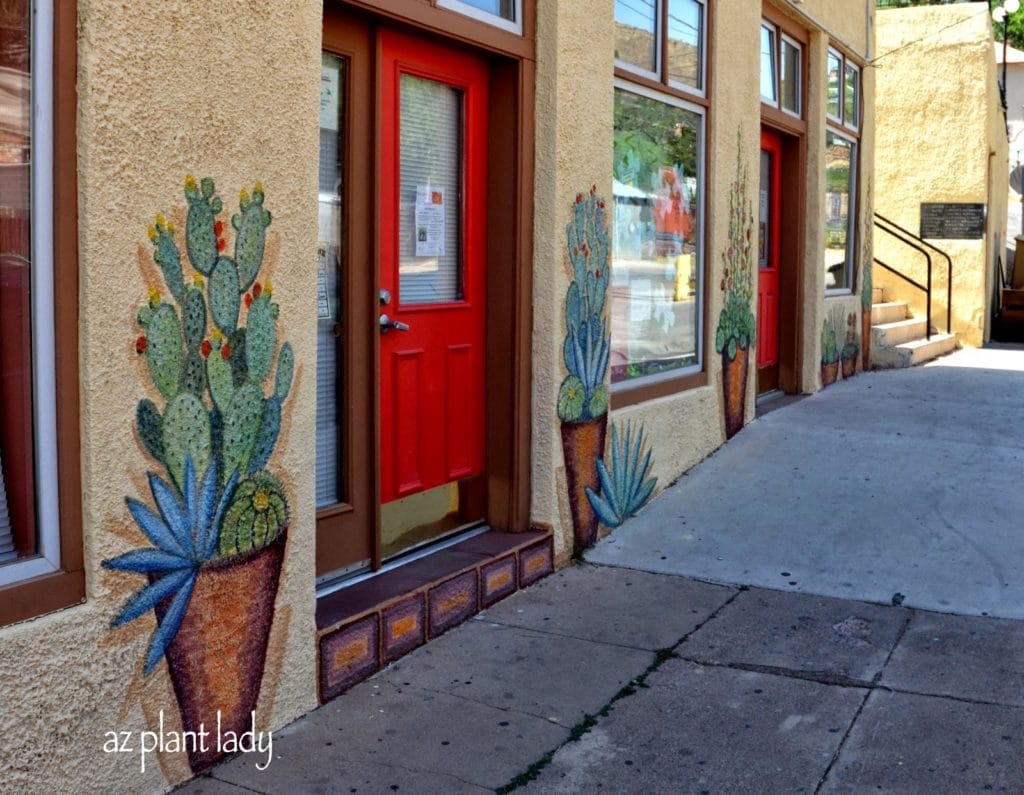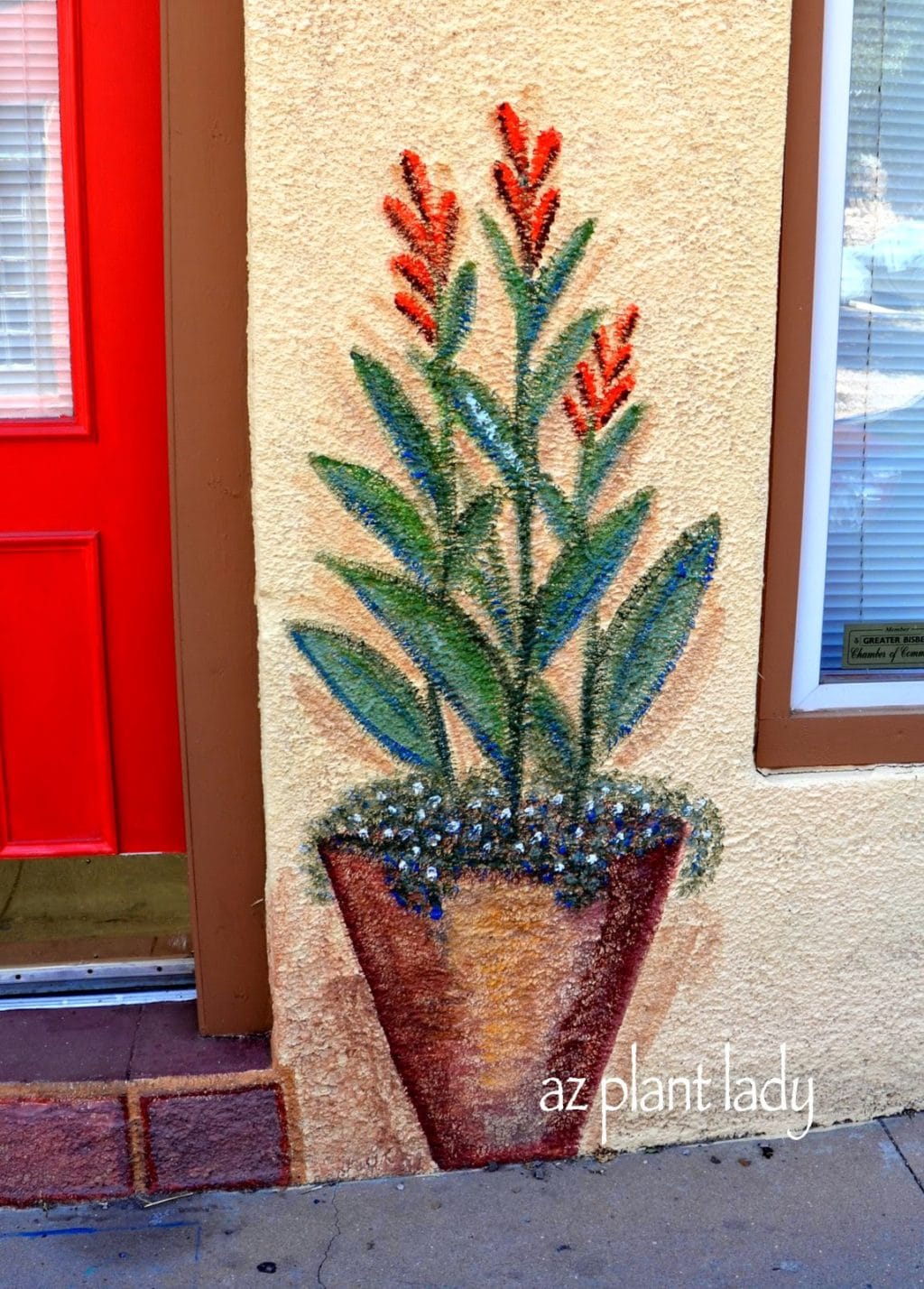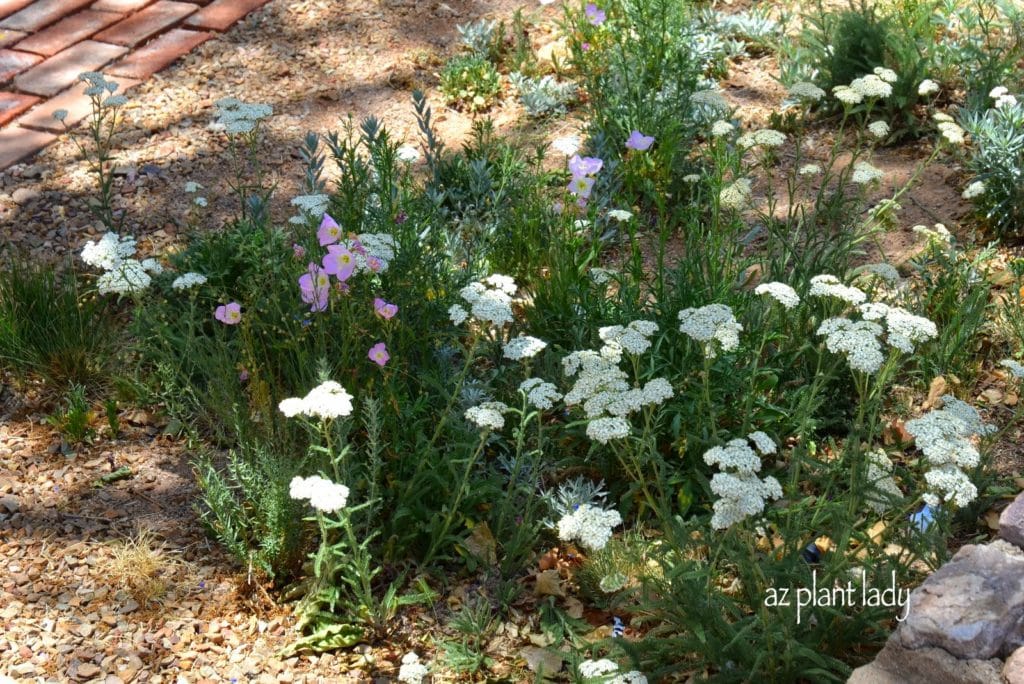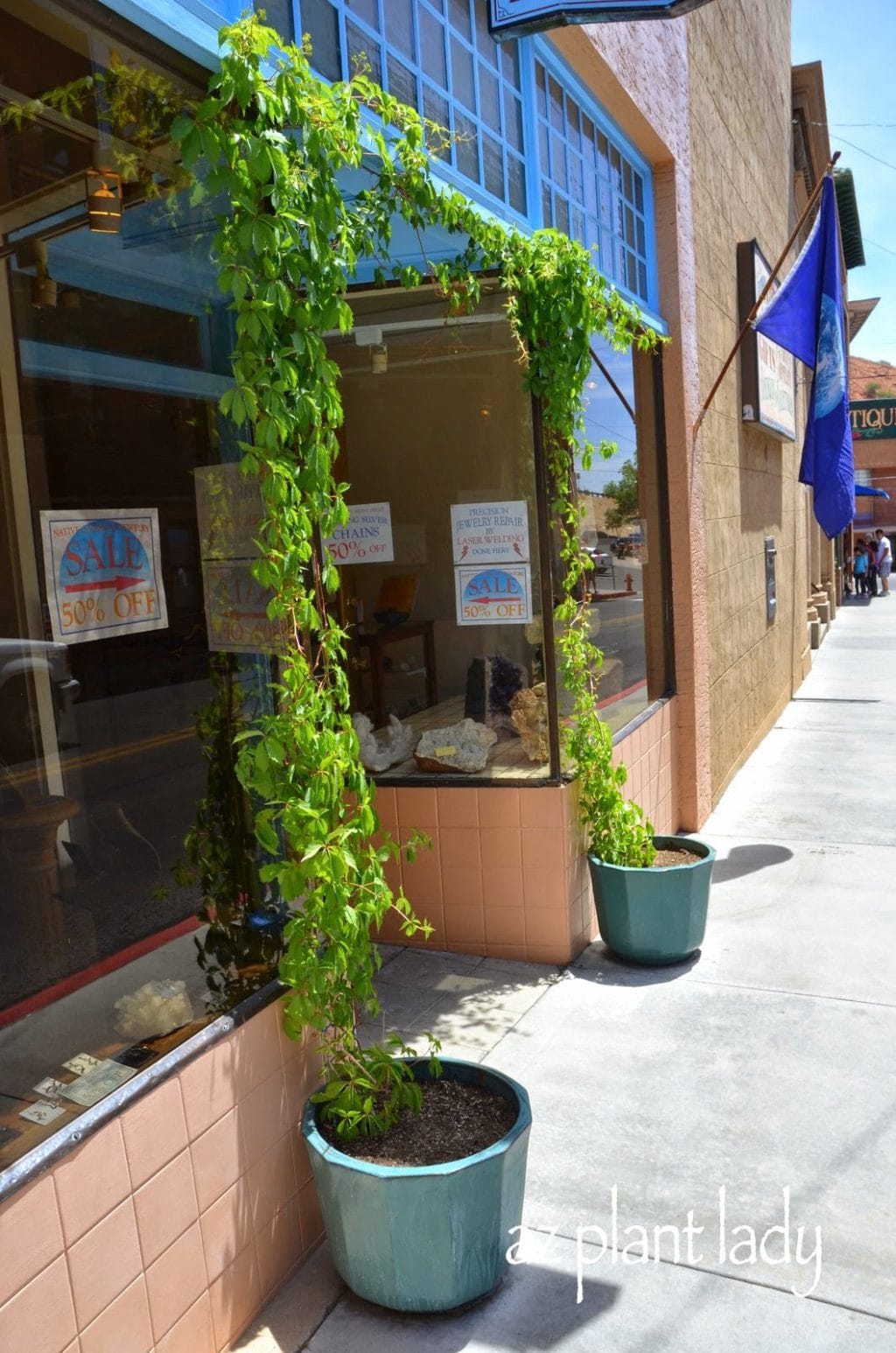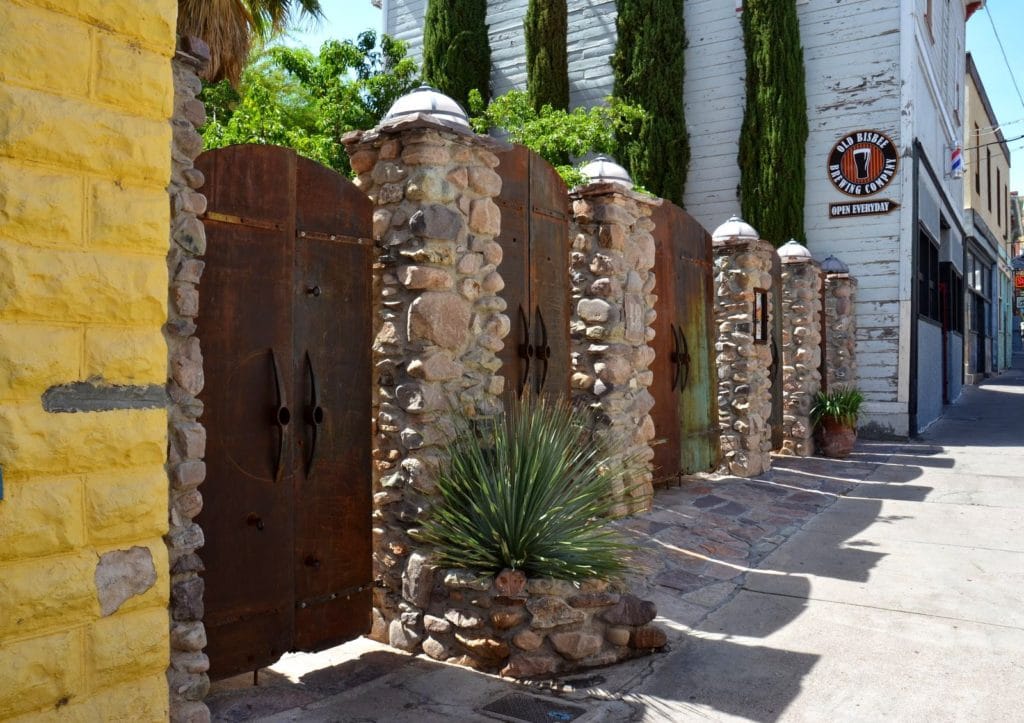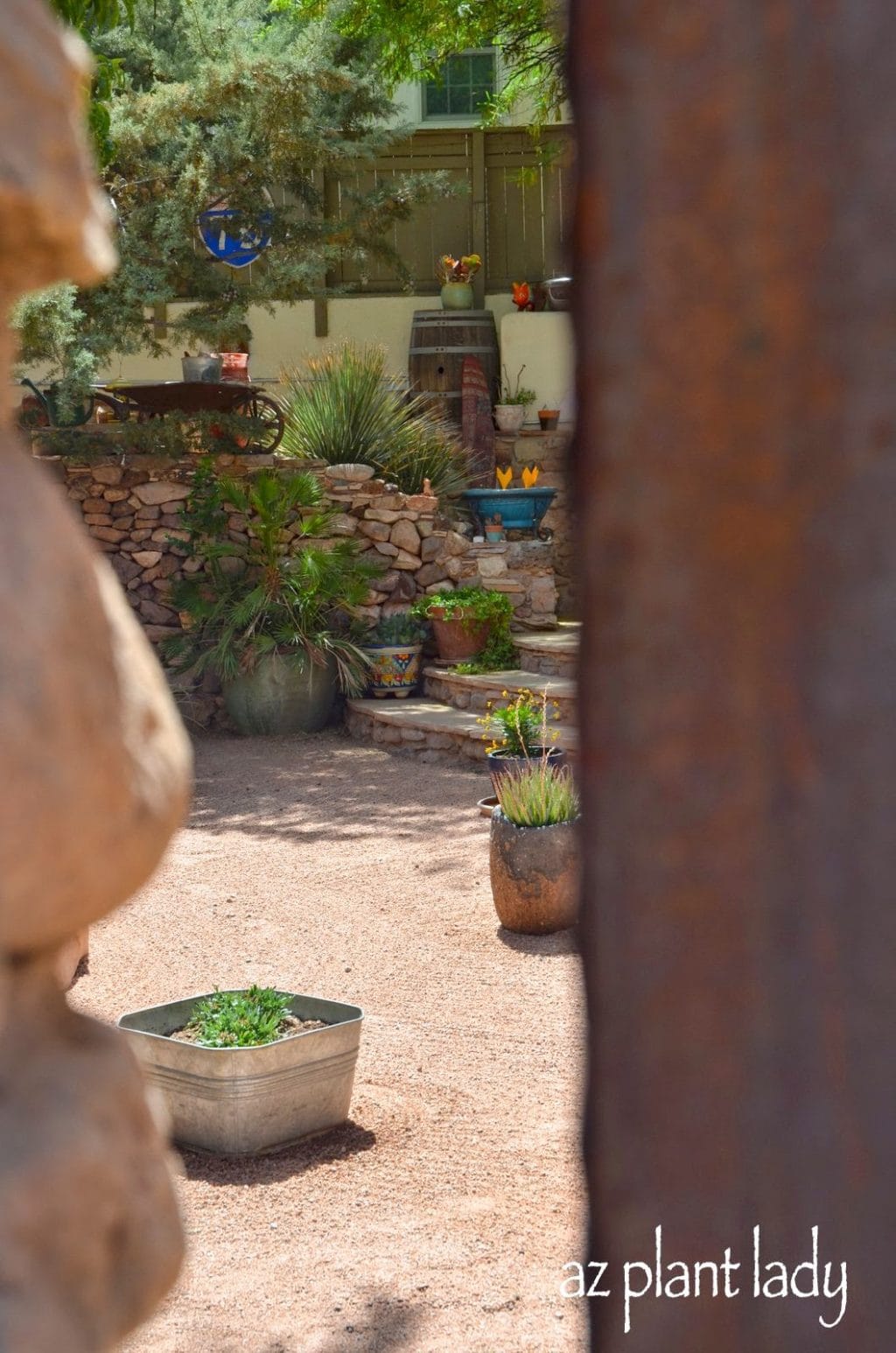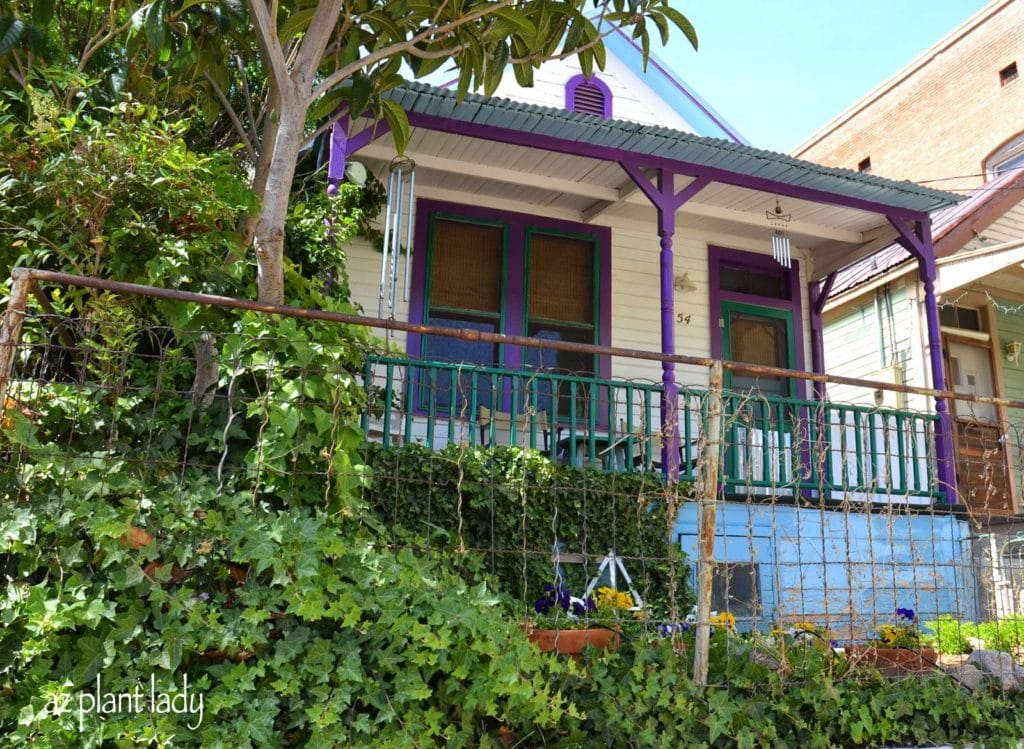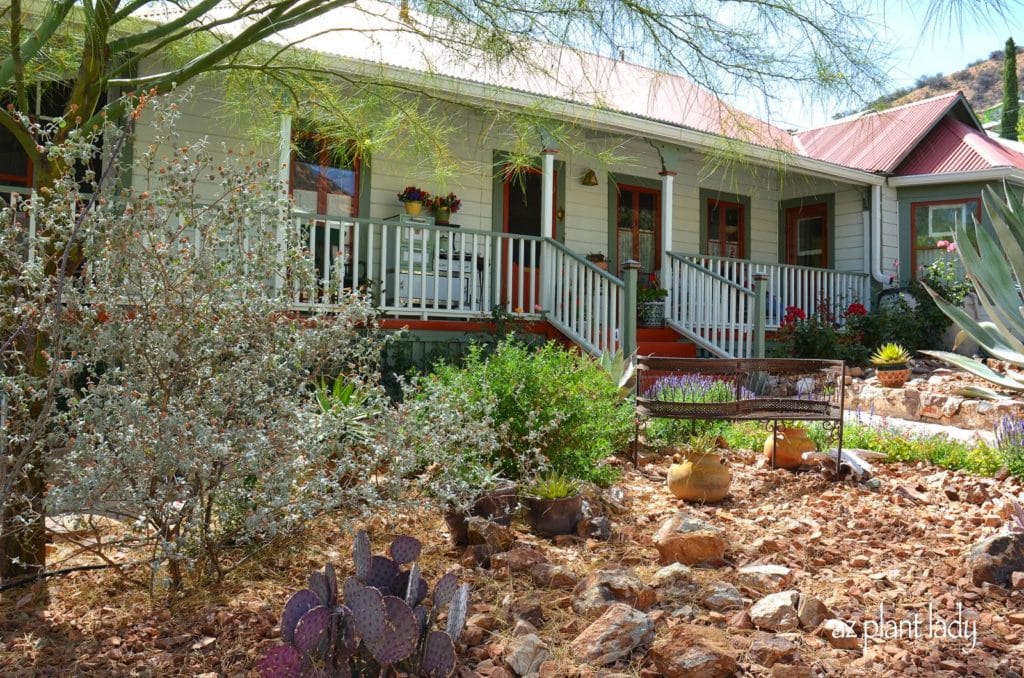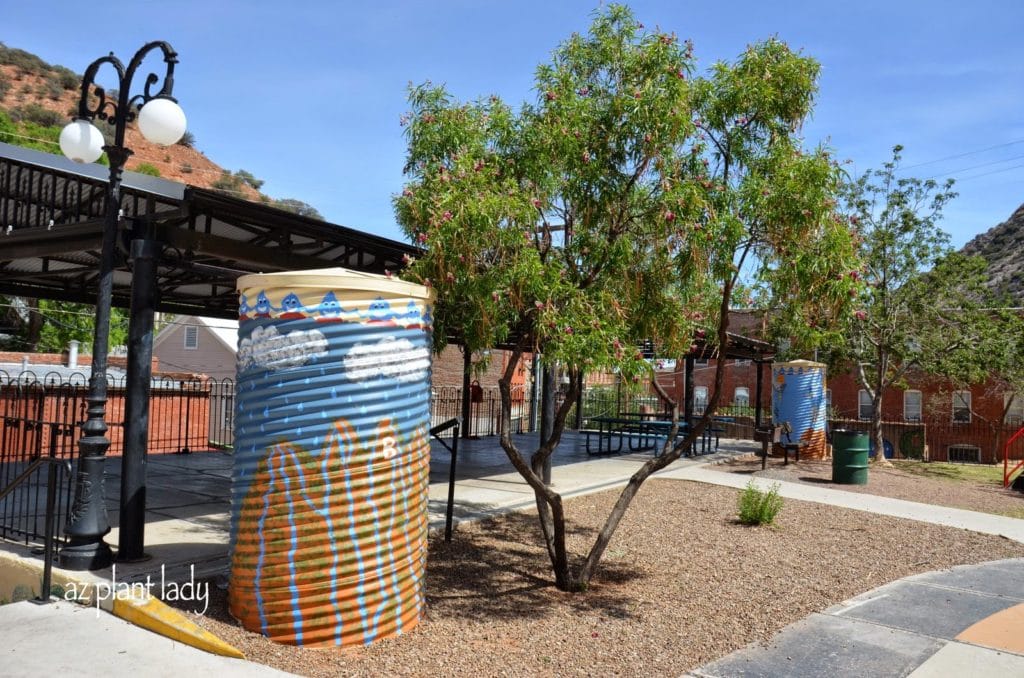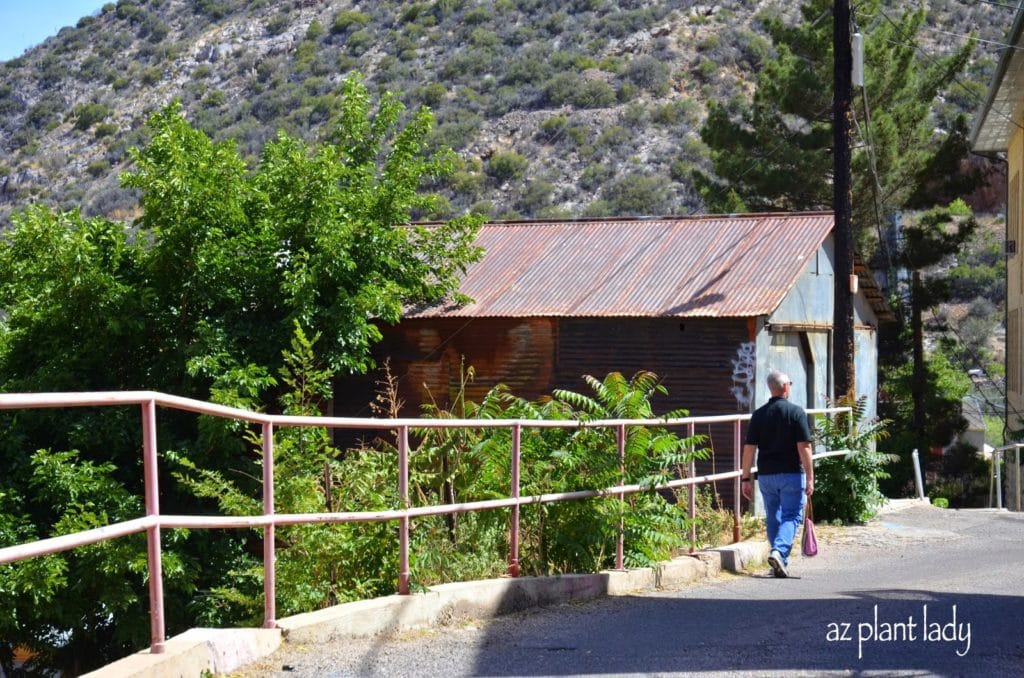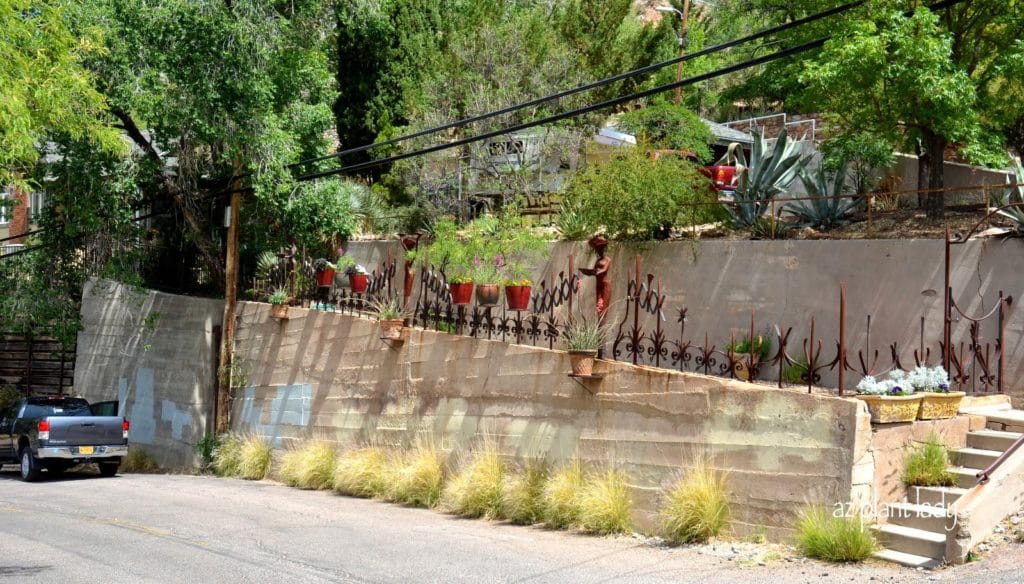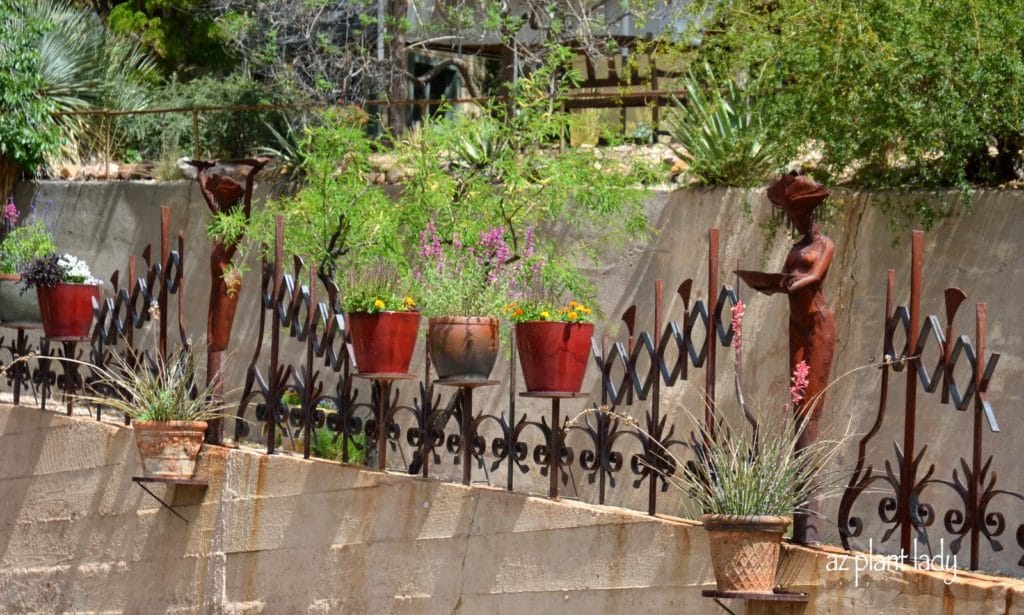Do you like to decorate your home with natural objects?
I do.
Recently, I’ve been busy creating items using things found in nature.
For example, these may seem like regular pieces of wood from a tree – but what if I told you that they were actually old roots from a cresote bush?
You may not know what a creosote bush is, but if you live in the desert – you’ve seen them. They are the shrubs scattered throughout the desert.
The roots that I used for my project came from one of the creosote shrubs in the picture, above.
This creosote shrub was in an area that I was asked to design next to a golf course. While I kept most of the creosote, I had one removed to make room for new plants.
You can see the pile of creosote roots left over after the shrub was pulled out.
I came up on these roots after placing the new plants and thought that they would be great for a future project. They were woody, twisted and had great character. I loaded them up in my truck and stored them in my side yard until I could find the right project in which to use them.
I decided to pair my old wooden roots with air plants.
My mother, who is extremely creative, introduced me to air plants and I immediately fell in love with their unique shapes.
Air plants are unique in another way in that they do not need soil. All they need to grow is air, water and a sunny window, which makes them perfect for using in home decorating projects since you don’t have to worry about soil.
You can read more about air plants and how to care for them, here.
So what do you get when you pair air plants with pieces of natural wood?
A very attractive centerpiece that looks great on the coffee table.
I was so excited about how nice it looked that I decided to try using smaller pieces of wood and different air plants.
Because each piece of wood was unique and had been twisted over time by nature, each pairing looked different.
I must admit that I had so much fun playing with different combinations.
So, what am I going to do with so many creosote wood / air plant combinations?
Earlier this year, my mother proposed going together with my sister and create items for the home that are made from natural elements for a large holiday boutique.
My sister and I both agreed and have been working on making different items focused on using natural and/or recycled elements, along with my mother.
Here are just a few of the items we will be selling:
Gourd Bird Houses
My mother and I have both grown gourds in our gardens and transformed them into bird houses and feeders.
Seed pod Christmas ornaments
Can you tell what type of tree/shrub this seed pod comes from?
If you guessed Texas mountain laurel (Sophora secundiflora), you’d be right.
My sister has made a variety of Christmas ornaments using seed pods. I love the idea of transforming natural items and using them to decorate your home for the holidays!
Terrariums with air plants
Do you like terrariums? I think of them as small worlds enclosed by glass. There will be quite a few terrariums with air plants, including hanging ones.
Lavender sachets made from antique seed bags.
During a trip to Winona, Minnesota – we bought quite a few old seed bags from antique stores. My mother, who is an excellent seamstress, made them into sachets, glass cases and aprons.
Reading glass cases made from antique seed bags.
‘Sparkly’ white Christmas seed pod ornaments
My sister has made a variety of Christmas ornaments using seed pods. I love the idea of transforming natural items and using them to decorate your home for the holidays!
Basil Salt
I love using basil salt on my favorite Italian dishes. The basil came straight from my garden 🙂
Mini air plants on antique wooden spools
Seed Bombs
Have you heard of seed bombs? I wrote about this fun garden trend last year. I first saw these at the Sustainability Festival last year.
*Can you tell that they are wrapped in ‘recycled’ packaging?
Air plants mounted on driftwood sitting on top of wooden plants ready for hanging.
My mother and I collected much of the driftwood during our trip to Lake Michigan this summer.
In addition to what I’ve shown you above, we will have aprons, totes made from seed bags, terrariums made from light bulbs and fairy garden houses made from wood and moss.
Our goal was to create items using natural and/or recycled items.
If you live in the greater Phoenix area, we would love to see you!
We will be selling our natural items at the Believe Boutique, which is a large holiday boutique with over 125 vendors. It is being held at Cornerstone Church in Chandler, Arizona on Friday, November 7th from 4:00 – 9:00 and again on Saturday, the 8th from 10:00 to 3:00.
**We’ll be located in the main lobby in the ‘Sustain’ booth. I’d love to meet you, if you have time to stop by!
